Findograa
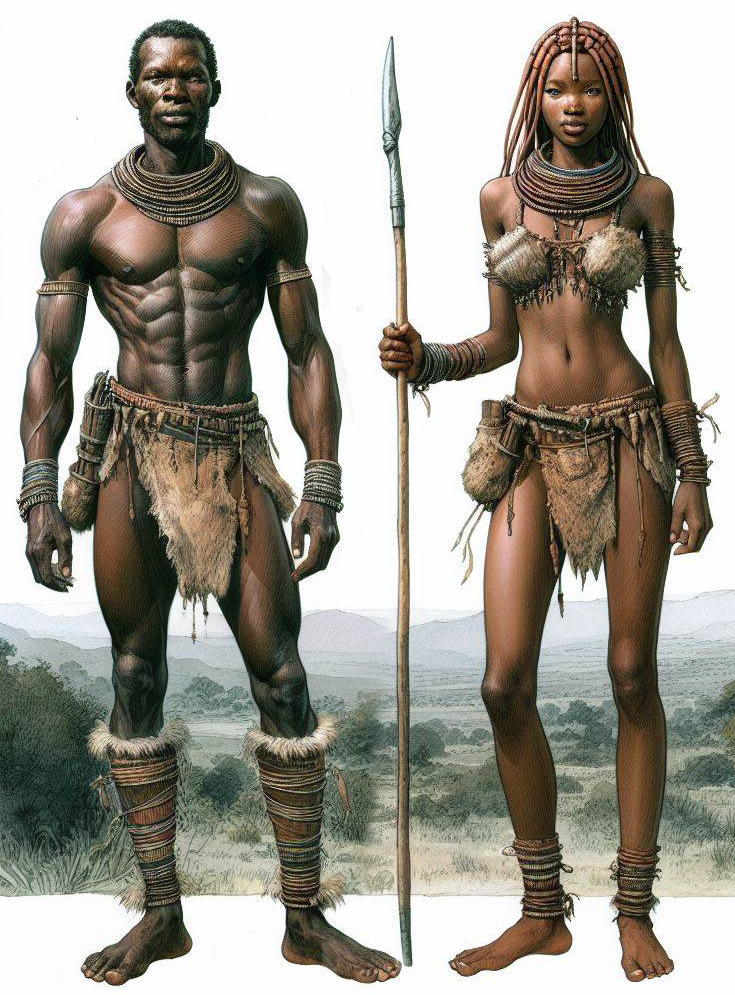
Appearance:
Build:
From thin to slim to muscular.
Height: (cm)
Females: 170-180
Males: 185-195
Weight: (kg)
Females: 50-65
Males: 65-85
Lifespan: (yr)
Females; 150-155
Males: 145-150
Skin:
Golden to brown to black to blueish.
Hair:
Mostly black.
Eyes:
Any
Language:
- REALMISH
- NORTH-EAST SKOGISH
- ILEISH
Culture:
- COASTAL
- DESERT
- GRASSLAND
- HIGHLANDER
- NOBILITY
- NOMAD
- SUBTERRANEAN
- URBAN
- WALDER
Timeline:
Legend
“Never try to outrun a Findograa, as they are used to running for long periods of time under the scorching sun Sun, meanwhile playing with their prey.”
Description
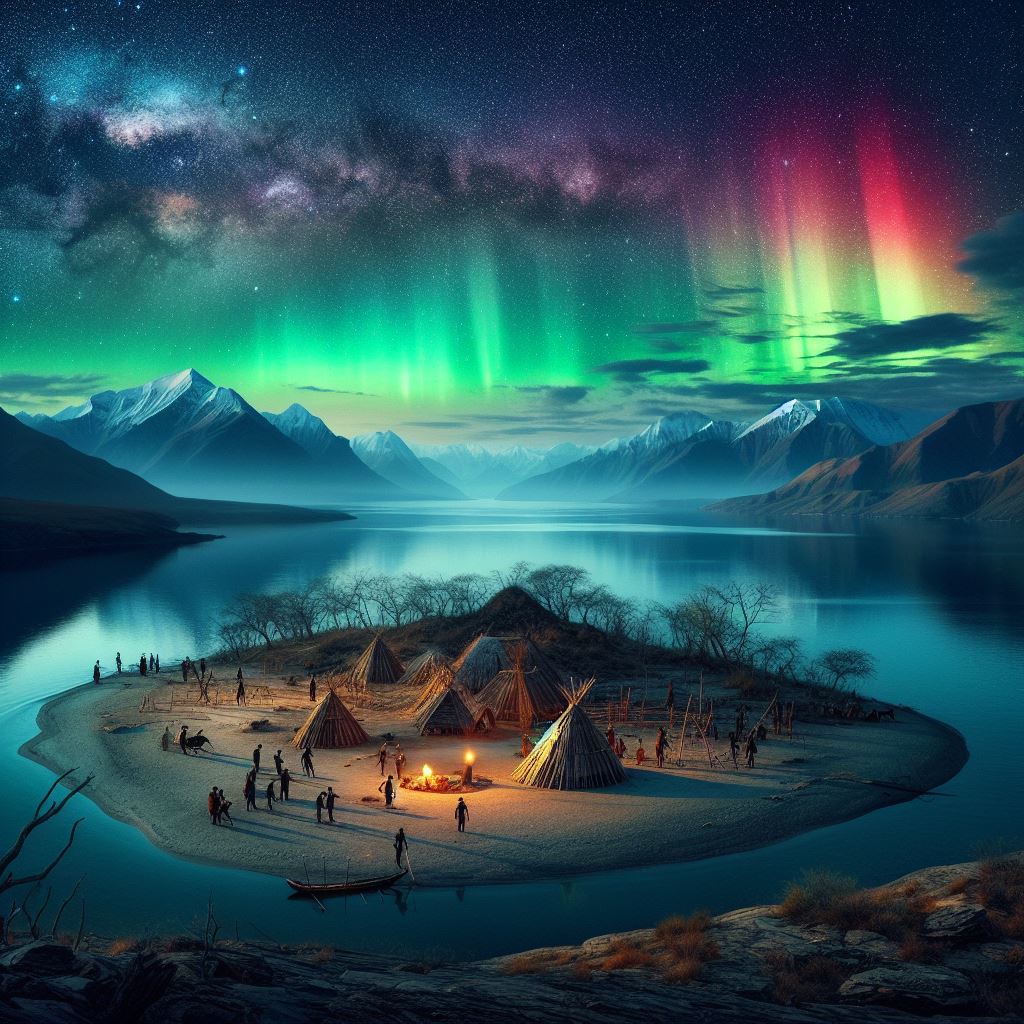
A race that became known as the Findograa emerged from the dynamic mosaic of Archaic and Drakk Alfar. A people whose presence is distinguished by a combination of pride, curiosity, and unyielding spirit. Their thin, commanding forms bear witness to their strength and drive, stitched together through centuries of trials and tribulations.
The Findograa, distinguished by their exceptional stamina and sinewy builds, traverse their world with an elegance forged from the furnace of their surroundings. Their bodies have been chiselled by the elements and show the signs of their survival, a visible witness to the toughness they’ve developed. The Findograa shine as a unique thread woven into the wider fabric of existence in a realm where perseverance paints a tapestry of oneness.
Their ancestral grounds, Gardens of the Void, which became the lands of Mealis, are a witness to their culture’s profound affinity with the nomadic way of life. The ebb and flow of their footsteps blend with the rhythm of the earth as they traverse the wide expanse with elegance that reflects the flowing dance of the elements. This connection to nature is reflected in their trading practices, where interactions with the inhabitants of Midgard, Utarik, and Findon produce echoes of common knowledge.
Communities spring up in the midst of the wilderness when the Findograa choose to band together under the leadership of a Chieftain and a council of wise elders. Wisdom is exchanged, traditions are passed down, and decisions that affect their future are made in these places.
Leadership and kinship weave together, creating a sense of connection that resonates deep inside their spirits. Their minds are ferocious and unshakable; they are living representations of man’s relationship with the earth. They are exceptional herdsmen, guiding their charges with gentle strength and ensuring that their flocks survive despite the rigours of nature. They chase their prey with the resolve of their ancestors, their extraordinary stamina providing them with an advantage as they cross the terrain.
The Findograa march forth—a beacon of adaptability and unflinching strength—in a world where the call of the wild meets the voice of culture, where the wind whispers tales of resilience and the land carries the footprints of generations. The land itself appears to reverberate in accord with every stride they take, for they are the personification of perseverance, tradition, and a history that spans beyond the horizon.
Skjald Sigurd
History
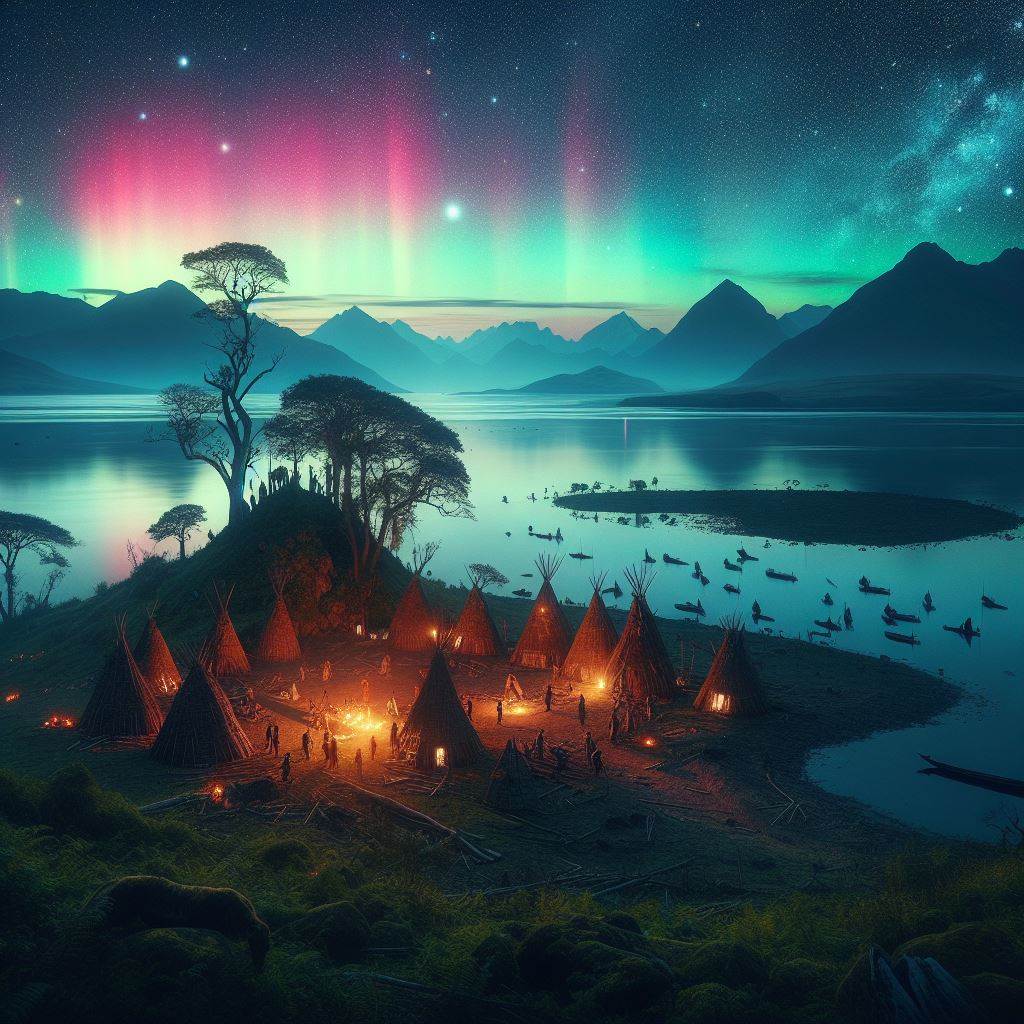
Dark Ages
The seventh oldest of the Indigenous Tribes, birthed because a few Drakk Alfar, in the year 4885 before our world, rested at a void garden, when some Archaic Cromi came by and shared the camp. Fruit of the unity, with thinner, smaller forebears and a desire for seclusion, they prefer life as scattered groups.
Despite their growing numbers, they remained in their original camp for many centuries. They didn’t stop returning from their extended hunting or discovery journeys around the void until their guiding camp Spirit revealed itself in their image, then strolled off in 10648, following a sudden burst of Mana energy. Many attempted to follow their old leader, but mortals are rarely able to keep up with celestial entities that can bend reality. The Drakk Alfar gradually departed the remaining archaic when their loved ones perished and their kids left. And, over time, both their Drakk Alfar lovers’ and the Findograa offspring’s memories and stories disappeared among the Archaic.
Skjald Vinotis
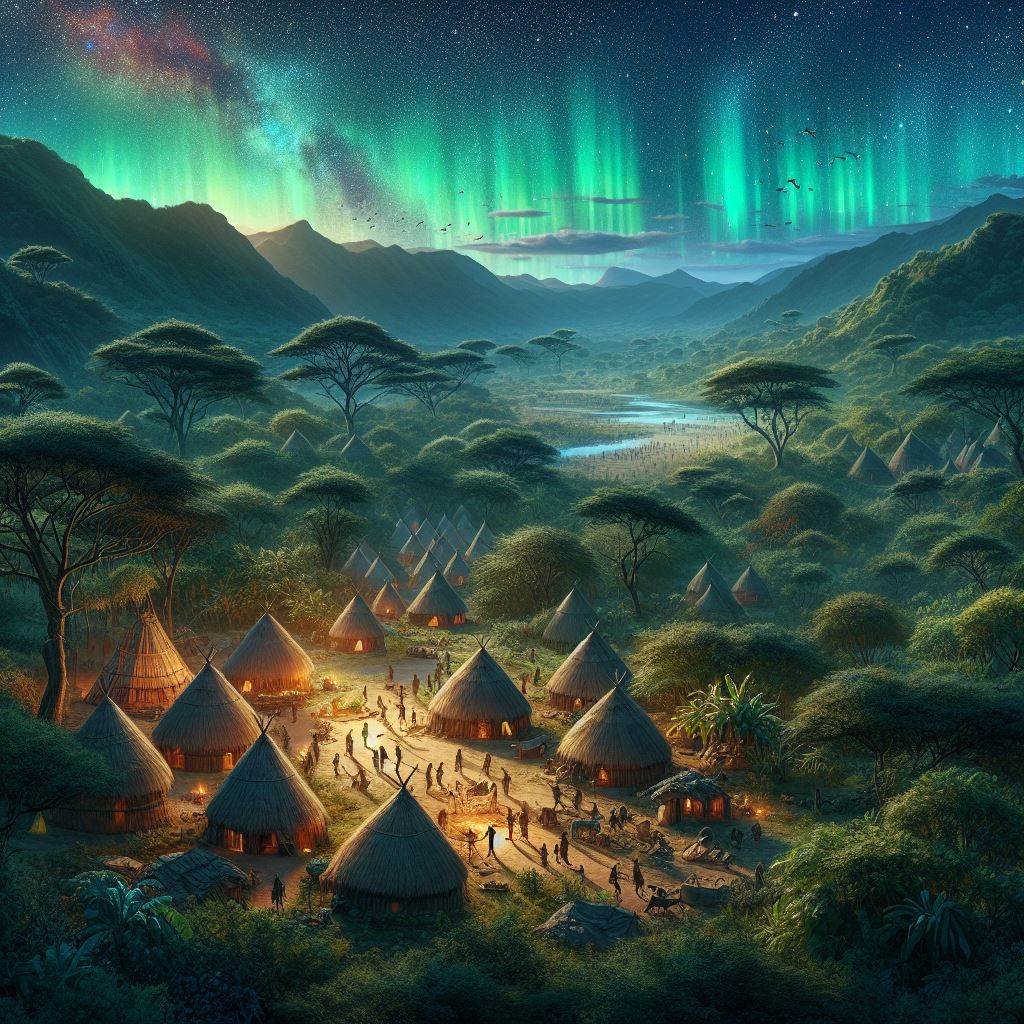
Üngluk Axitokat’s Iron Empire
In 8201, during a period of immense unrest, a youthful and visionary leader named Üngluk Axitokat reappeared in the original garden. Finding their original archaic ancestors extint, the nomadic Findograa tribes dispersed all over the void, frequently clashing over resources, and their cohesiveness frail. Üngluk set out to alter his people’s plight because he recognised their power and the value of unification.
In 8241, Üngluk became chieftain of his tribe at the age of forty. His leadership skills shone through as he directed his followers with wisdom and tact. Recognising the importance of a unified Findograa front, he set out on a mission to see the numerous tribal tribes throughout the region. His first action was to seek out Drakk Alfar and hear about their birth, as he managed to find some of the original ancestors; he had their cradle described firsthand.
Üngluk then built ties with tribe after tribe via relentless diplomacy and a real desire for collaboration. His charm, along with his knowledge of the Astral and mana connections, garnered him the respect of many chieftains. In 8267, he delivered a major announcement in front of a large gathering of tribe chiefs when he announced a single Findograa kingdom, ushering in a new age for their people. He was crowned the first monarch of the unified Findograa tribes, and his reign signalled the start of “The Iron Empire of Üngluk Axitokat.”
The Findograa began to grow like never before under Üngluk’s imaginative leadership. The Iron Empire grew in size, absorbing neighbouring areas occupied by various races. Their trading lines were extensive, linking them with a variety of races, such as Moss’Ari in 7950, Mawmen in 7935, and Tatongol in 7905, to name but a few. The Findograa were famed not just for their Voidtravel prowess but also for their intellect, diplomacy, and superb herdsmanship.
The concentration of authority and the formation of a strong, centralised administration were hallmarks of Üngluk’s rule. He established a council of knowledgeable elders to assist him in ruling the huge empire and making judgements that benefited all tribes. His reign was fair yet firm, giving him the moniker “Üngluk the Iron Fist.”
The Findograa Iron Empire thrived and had its “Golden Age of Expansion” during the leadership of Üngluk Axitokat and his successors for about 3800 years (4467). During this period, the empire reached its pinnacle, and Findograa culture and influence extended far and wide. They were respected not only for their togetherness but also for their adaptability to different situations.
Üngluk’s legacy was carried on by several generations of Findograa monarchs who emulated his strong leadership. The empire’s infrastructure grew, with spectacular Astral-infused buildings and commerce networks that stretched far over the Void. Even the most durable empires, though, have difficulties. In 4467, the first of several tribal tribes became dissatisfied with the consolidation of authority, believing that it hindered their autonomy.
In the year 4319, a charismatic chieftain named N’anga’too Gujila led a coalition of disaffected tribes to rise up against the authority of the Iron Empire. In 4315, a civil war signalled the end of Üngluk Axitokat’s Iron Empire.
The dominion of Üngluk Axitokat had gone, but his memory lived on. While the Findograa was no longer a united empire, it continued to prosper in separate places, with each tribe ruling freely. Üngluk’s ideal of unity and power was carved in their history and culture, motivating subsequent generations to seek collaboration and prosperity in the midst of their world’s ever-changing terrain.
As a result, the Iron Empire of Üngluk Axitokat became a footnote in the Findograa race’s long and lasting tale, a monument to their capacity to rise, adapt, and persevere in the face of both victory and misfortune.
Skjald El Mary
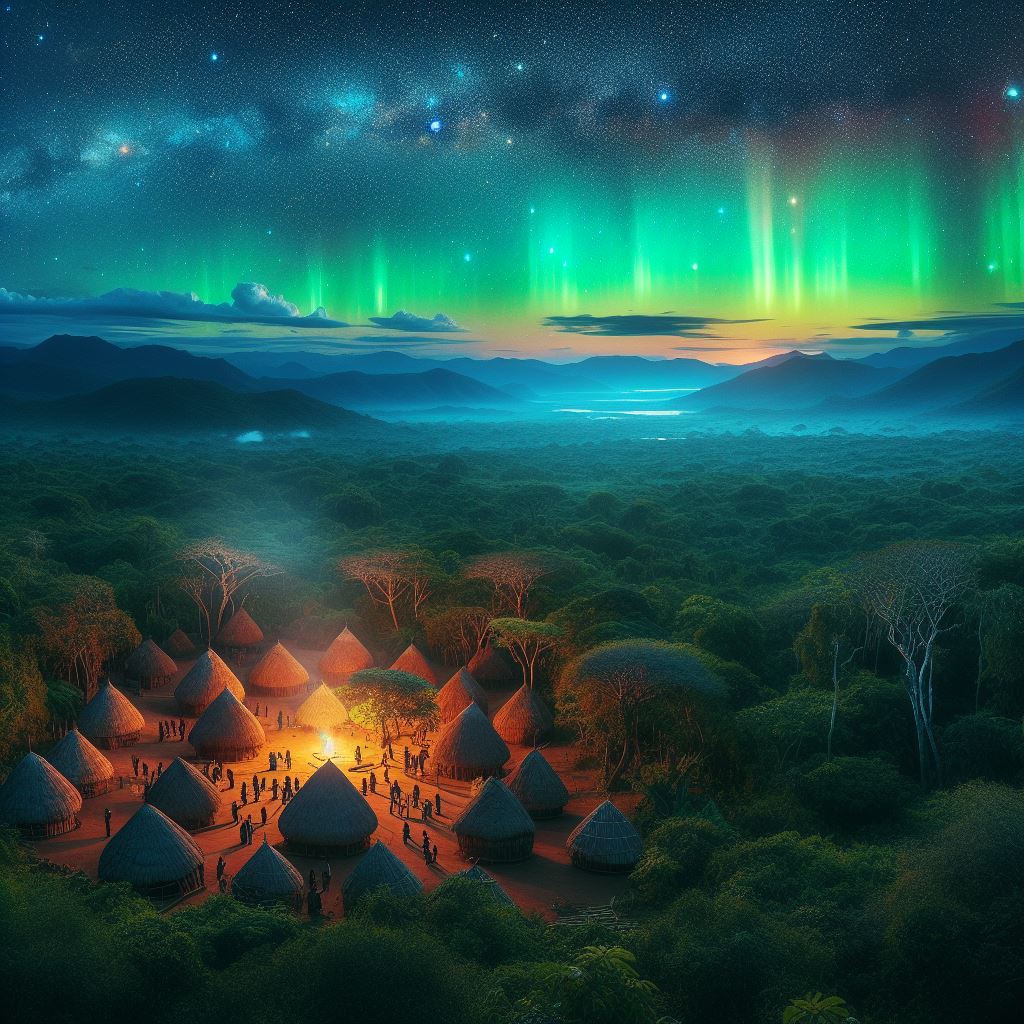
The Fragmentation Era:
The Findograa underwent an age of fragmentation and decentralisation with the disintegration of Üngluk Axitokat’s Iron Empire. While they were no longer united under a single king, the legacy of their once-mighty empire echoed across the region.
Several Findograa kingdoms and city-states arose during the Age of Fragmentation, each contending for control and independence. Led by charismatic chieftains or elder councils, they wanted to preserve the Findograa’s rich cultural legacy, including their mastery of Astravel and mana linkages.
Thundertop Kingdom
In 4200, Queen Morganna is remembered for her attempts to construct a legal system that provided order and justice to her kingdom. She mainly increased the kingdom’s territory via smart partnerships and diplomacy, but she was not afraid to resort to raw force when necessary.
The medium-sized Kingdom of Thundertop stood as a symbol of unity and power in the heart of the Findograa territories. This medium-sized country prospered under Queen Morganna’s reign. Morganna was a wise and righteous monarch who was noted for her outstanding leadership. Her most important accomplishment was the drafting of laws, which restored order to the realm.
Queen Morganna was also a skilled diplomat. She increased the majority of her kingdom’s territory through smart agreements with other nations rather than conquest. Her charming charm and knowledge gained her followers’ allegiance. During her reign, Thundertop became a haven of peace and prosperity.
City-State of Ironhold
In 4190, Lord Caelum is a well-known military strategist who has successfully defended Ironhold against a variety of foreign challenges. He fortified the city’s defences and established its independence.
Lord Caelum, a skilled military strategist, governed Ironhold, a strong city-state. Lord Caelum’s constant devotion to protecting his people has resulted in the city’s unrivalled defences. Ironhold has faced external challenges such as an invading army and roving raiders several times. Lord Caelum’s tactical skill triumphed each time, repelling these foes.
Ironhold retained its independence and stability during his leadership. Because of its strategic position and safe climate, the city developed as a trade and business centre. Lord Caelum’s history as a defender of Ironhold gained him his subjects’ respect and adoration.
The Silverhaven Kingdom
In 4185, King Alaric, an absolute monarch, was well-known for his support of the arts and education. Silverhaven became a centre of scholarship and culture under his administration, drawing painters, poets, and intellectuals from all around the region.
King Alaric reigned as a patron of the arts and scholarship in the little, calm Kingdom of Silverhaven. Despite its diminutive size, his kingdom shined brilliantly as a centre of study and culture. Knowledge and innovation, according to King Alaric, were the ultimate treasures of a country. He lavished encouragement on artists, poets, and intellectuals, drawing them to Silverhaven.
Silverhaven became recognised for its great libraries, bustling theatres, and fine pieces of art throughout his reign. Scholars in the kingdom made great advances in a variety of subjects, supporting intellectual progress and enlightenment. The ongoing contributions of Silverhaven to the worlds of art and knowledge preserved King Alaric’s legacy.
Stonewall City-State
In 4178, Lady Elara, an Oligarch, successfully led an expedition to discover significant mineral deposits in the neighbouring mountains. She turned Stonewall into a thriving commercial centre noted for its stones and metals.
The City-State of Stonewall, a flourishing city of modest size, set among the harsh mountains, was governed by the clever Lady Elara. She had a good eye for lucrative mineral deposits, and she successfully led an excursion into the adjacent peaks. Lady Elara’s efforts resulted in the discovery of rich veins of jewels and valuable metals, converting Stonewall into a well-known trading centre.
Lady Elara made certain that her people profited from the city’s mining sector. She made infrastructural investments to assist the burgeoning mining activities. Stonewall’s gemstones and metals were highly sought-after commodities in the region, elevating the city-state to the ranks of the land’s wealthiest.
Wildwood Kingdom
In 4175, King Thalron, the Tribal Monarch, formed relationships with several forest tribes and gathered them under his banner.
Nestled deep amid immense woodlands lay the huge Kingdom of Wildwood, governed by the mysterious King Thalron, a leader seeking peace with the Fautyr who brought together the many woodland tribes under his banner. During King Thalron’s reign, sustainable forestry practices saved old trees while ensuring his people’s prosperity.
The monarchy prospered because of its closeness to nature. Traders were drawn to Wildwood’s unusual resources, which included exotic plants and timber gathered with care. Wildwood became a haven for both its humans and the myriad wildlife that called the forest home as a result of King Thalron’s dedication to the forest and his vision of a harmonious country.
City-State of Emberfell
In 4165, Lord Draven, the Merchant Council’s head, created Emberfell into a major commercial centre, supporting economic prosperity and affluence for its residents. He negotiated rich trade deals with neighbouring nations.
Lord Draven’s flourishing city-state of Emberfell was a beacon of commerce and trade. Lord Draven’s foresight and aptitude transformed Emberfell into a significant commercial centre. He expertly arranged rich trade treaties with other nations, luring merchants from all around.
The wealth of Emberfell was founded on its strategic location and the protection offered by Lord Draven’s well-maintained defences. The city became famed for its busy marketplaces, where unique commodities from other lands were purchased and sold. Emberfell’s riches and trading influence made it an important participant in the regional economy.
Kingdom of Frosthold
In 4160, Queen Isolde undertook measures to promote justice in her country. She also arranged a peace pact with a rival kingdom, thereby putting an end to years of strife.
The Kingdom of Frosthold is a medium-sized country ruled by Queen Isolde, a woman of elegance and intelligence. She instituted changes to improve justice during her reign. Frosthold accepted her as a constitutional monarch during her reign, ushering in a new age.
The most significant achievement of Queen Isolde was forging a peace treaty with a rival country that had been at odds for generations. Her diplomatic talents and commitment to peacebuilding helped bring stability to the region. During her reign, Frosthold’s people experienced a newfound feeling of togetherness and optimism, and the kingdom prospered under her caring leadership. They admired her so much that they finally accepted her daughter as their future king, thereby terminating the constitutional monarchy.
The Axitokar Kingdom
In 4150, following the fall of Üngluk Axitokat’s Iron Empire, his successors assumed authority and established the Kingdom of Axitokar. Axitokar’s ancestors formed the kingdom, which was named after Üngluk Axitokat. They saw themselves as the stewards of Üngluk’s heritage and the carriers of his vision for the Findograa. Axitokar intended to maintain their great ancestor’s heritage by uniting the Findograa tribes under their banner. They governed with a sense of responsibility and a dedication to upholding the Iron Empire’s traditions.
Eldralia, the City-State
In 4129, Known for its stunning Aatral-infused architecture, Eldralia became a centre of magical knowledge and education. It drew Findograa magicians, intellectuals, and Astral travellers from all around the shattered countries. Eldralia stayed neutral in battles between developing states, preferring to pursue knowledge and preserve their culture.
The Ficuldian Alliance
In 4100, the association was a loose association of Findograa city-states in the Ficuldian area that prioritised commerce and cooperation among its own member states. They pooled resources and frequently utilised Astravel, which enabled them to create trade lines with faraway places.
The Nomads of the Central Plains
In 4094, the Nomads maintained their people’s traditional customs, opposing attempts to centralise control. As a result, they retreated to explore the Void around their home territories. Many cities, villages, and temples were abandoned and have since vanished into the sands of time.
The many Findograa governments engaged in diplomacy, trade, and occasional battles as the Age of Fragmentation progressed. While they remained politically divided, the Findograa understood that their togetherness, created during the Iron Empire, was a source of strength and a symbol of their lasting spirit.
This period lasted until the pivotal event that signalled the end of the Dark Ages and the start of a new era—the folding of the Void and the birth of the orld. With the foundation of the world, the Findograa faced new difficulties and possibilities as they began a new chapter in their lengthy history.
Skjald Vinotis
First Age
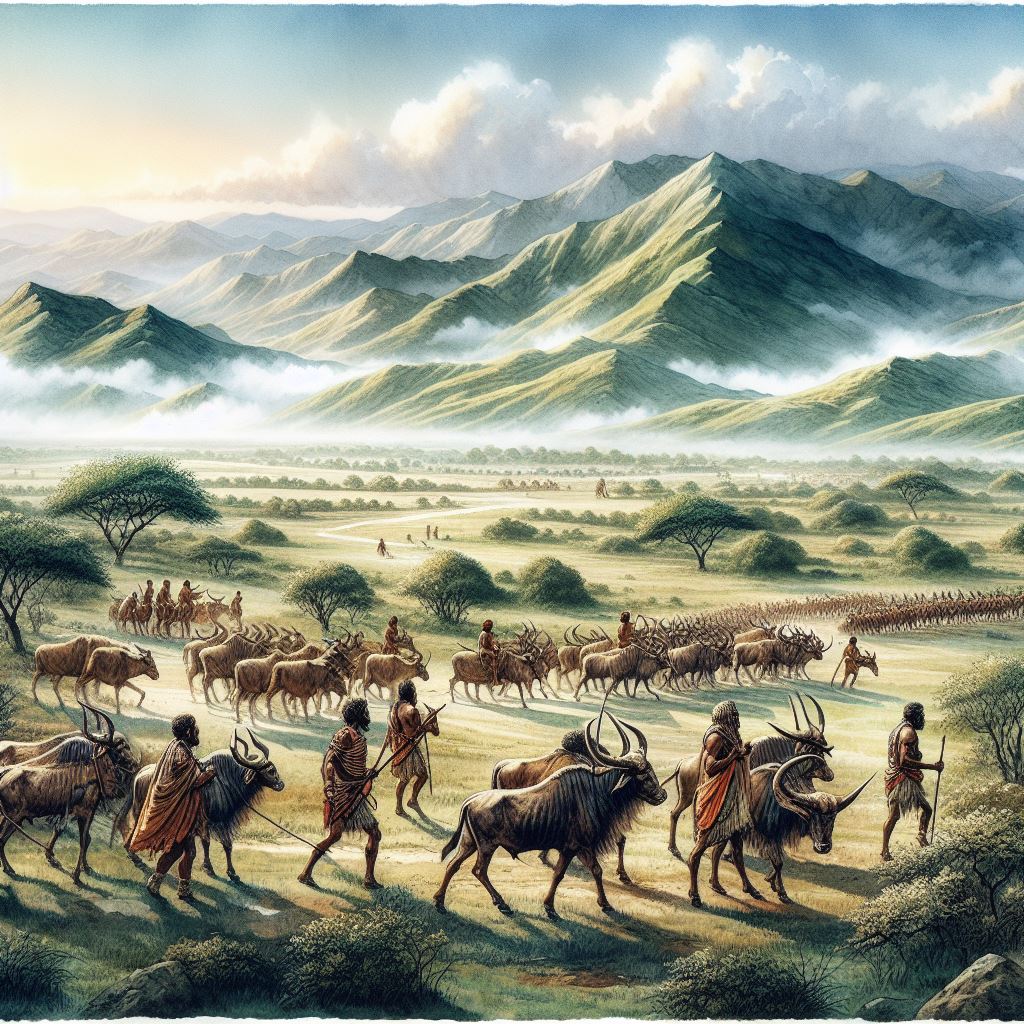
In year 1, when the world was established, every void garden was messed up. But so were many other things in this divine blunder, bringing a chaotic transition into the First Age. The scattered mana leaks ceased shining, radiating mana linkages faded or disintegrated, roads and camps twisted and buckled, and everything floated around like boats being rafted. As the divines folded the void and constructed the world, the Findograa experienced no light from void components or astral leakage, only a rare flash when the divines performed their otherworldly antics.
The Findograa, who are difficult to terrify, proceeded on their journey, but the once-familiar mana links and astral paths were interrupted, leaving them bewildered and facing an unknown future. Despite this, their indomitable spirit drove them to try to find their way through the turmoil, but they sometimes realised too late that pathways had altered or vanished. As a result, many of Findograa’s bravest died during those early months at Mealis. However, they gradually learned to recognise trails trotten from gathering void gardens and in between paths, where races met.
When, all of a sudden, light soared across the sky to the south. They quickly discovered they were on a very huge island once the world was enlightened. Nothing but sea to the west, north, and east, but additional land spread across southern waterways.
In the years 35–40, the ever-curious Findograa set out on adventurous excursions over these southern waterways, motivated by their restlessness. They discovered an even larger island, Midgard, which would become their second home.
In 35, the large grassy plains of Midgard welcomed the first migrants, providing good ground for development, and the Findograa gradually erected hamlets and towns. They encountered various races, such as the Ortagui in 35, Clovincaz in 42, T’Aurs in 36, Moss’Ari in 38, Fautyr in 36, Kobold in 38, Ljost Alfar in 39, Wickeryadi in 41, and Thursar in 44, as they moved across the island. Despite early conflicts, the Findograa ultimately assimilated into their temporary home’s varied terrain. In 50, they found the Isles of Utarik, 51 Findon, and 53 Markeoy as they progressively spread and encountered new camps, clans, and tribes. Despite the distances, they were able to establish themselves there as well. They quickly expanded and multiplied in number, establishing little hamlets and villages, and danger began to brew.
The Kingdom of Axitokar had various problems during the early years of the First Age as the world changed dramatically. The interruptions in Astral channels, along with the altering environment, made it difficult for them to preserve territorial integrity.
Axitokar concentrated on solidifying its primary territory in Findograa’s ancient regions, which are now known as Mealis. They wanted to preserve their cultural history and the customs passed down from Üngluk Axitokat.
The Findograa adapted to their new clutched-up realm and far-flung surroundings over time, and in 77, they dived back into the Astravel lessons that had almost been forgotten. Their neighbours grew very interested in their understanding of astral magic and mana linkages. The Findograa’s mastery of astravel and ability to bring some order to the chaotic astral passageways won them great respect.
Skjald Valgrif
The Empire of Astraliis
In 111, the Findograa’s impact had risen as they spread and grew in number. They began building a great metropolis in the heart of Midgard called “Astraliis,” which became a beacon of astral knowledge and the centre of their kingdom. The “Astral Renaissance” signified Findograa’s comeback as a unified and affluent kingdom. While not as centralised as Üngluk Axitokat’s Iron Empire, it was distinguished by a common devotion to cultural preservation and the quest for astral wisdom.
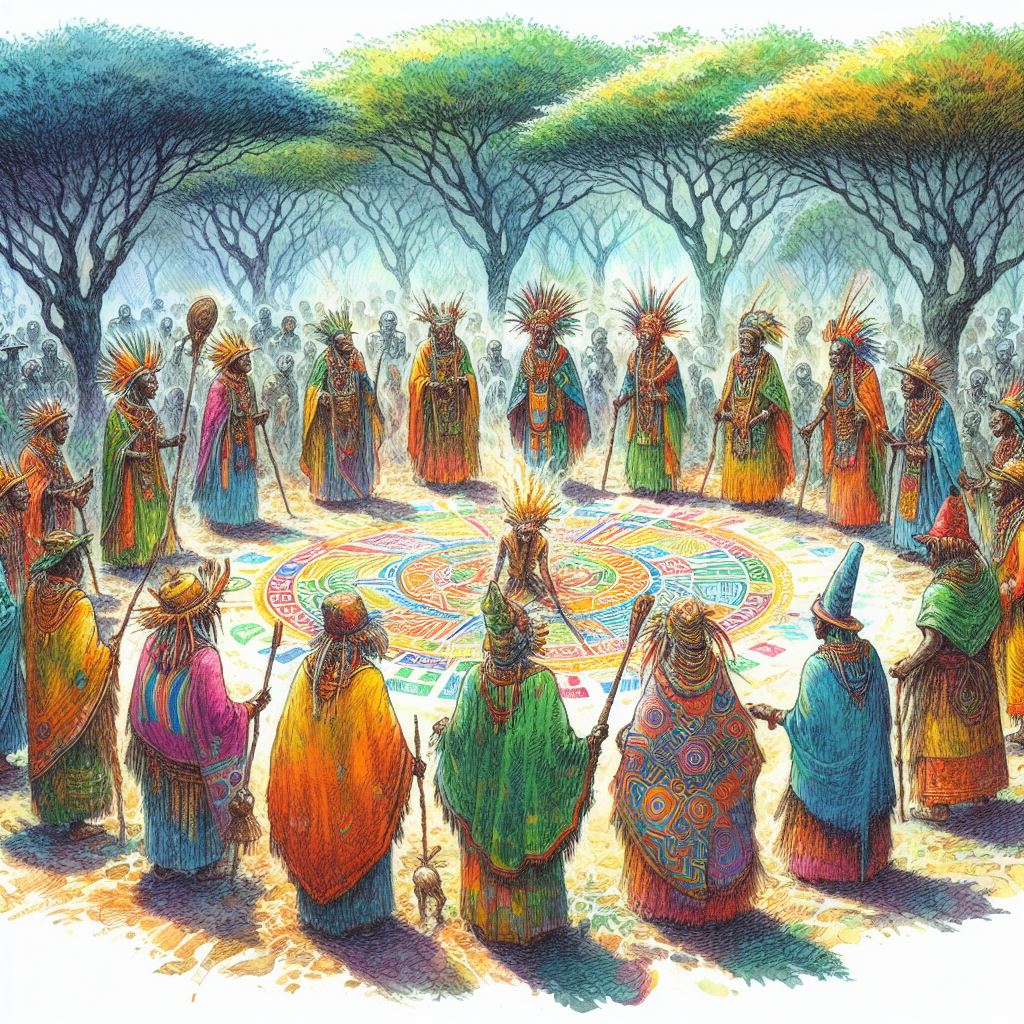
In 222, their empire was ruled by a council of nine astral elders, who were known for their astral magic and mana connection manipulation abilities. They safeguarded the stability of astral routes and the Findograa people’s continuous prosperity. Eight of them donned colourful capes and governed from magnificent structures in the powerful Earthnode, located at Utari, Mealis, Findon, Markeoy, and four in Midgard. Each of the earthnodes was sealed by a Astral Site/Gate, built by Archaic with the help of Boriac. The ninth, the council’s head, wore a colourful cloak made from strands of all eight hues.
The Findograa culture saw a revival, with an emphasis on art, literature, and astral philosophy. Astraliis, their great metropolis, served as a centre of scholarship and creativity, drawing academics and artists of all races. Their farming skills improved, and they began to raise exceptional camels, cattle, goats, sheep, and chickens.
Axitokar in the Astral Renaissance
The Kingdom of Axitokar found itself at the forefront of Findograa’s cultural and magical resurgence as the Astral Renaissance unfolded. They were crucial in the transmission of astral knowledge and the maintenance of Findograa culture.
Axitokar Keep, the capital city, became a centre of Astral study and teaching. They founded prominent colleges and libraries devoted to the study of astral magic and mana connections.
As the keepers of astral wisdom and stewards of Üngluk’s heritage, the Kingdom of Axitokar acquired a distinct identity. Their power stretched beyond their boundaries, and they maintained close ties with neighbouring Findograa nations as well as the vast metropolis of Astralis.
Axitokar’s Role in the Empire
Despite being on the outside of the Second Findograa Empire, Axitokar was an important reservoir of traditional Findograa ideals and legacy. They worked as central council advisors and as mediators during diplomatic discussions.
The nobles of Axitokar, known as the “Astral Lords,” were famous for their mastery of astral magic and unflinching devotion to the empire’s unity. They were frequently called upon to arbitrate conflicts and advise the empire on astral affairs.
Despite their emphasis on tradition, Axitokar strongly supported the Astral Renaissance’s accomplishments. They understood the significance of adaptation and the necessity of change in an ever-changing world.
The Kingdom of Axitokar acted as a link between the past and the future throughout the Astral Renaissance and the empire’s golden era. Their loyalty to Üngluk Axitokat’s vision and astral understanding made them a valued element of the Second Findograa Empire’s triumph.
However, as the First Age proceeded, obstacles arose that put the Second Findograa Empire to the test. The planet was far from stable, and the astral upheavals generated by the Earth’s formation continued to have far-reaching consequences. These trials moulded the empire’s fate and paved the way for momentous events in the years to come.
The Gradual Decline
In 1227, the Findograa Empire saw internal issues that contributed to its eventual demise as the First Age continued. While originally a source of harmony and wealth, the sophisticated labyrinth of astral passageways began to destabilise. Disruptions generated by the world’s formation continued to impact astral magic and mana linkages, making them more unpredictable.
While intelligent and respected, the Astraliis council of elders found it increasingly difficult to maintain order in the tumultuous astral world. In 1783, regional conflicts among the Findograa kingdoms and races, worsened by shifting astral paths, stressed the empire’s cohesiveness.
Astral intellectuals and mages struggled to deal with the instability, and the once-grand Astral Renaissance began to disintegrate. While Astraliis remained a knowledge centre, there was internal unrest in 2363 as groups within the council of elders differed on how to deal with the astral disturbances.
During this time, the Kingdom of Axitokar attempted to maintain its traditional ideals while being relatively stable in comparison to other areas. They remained counsellors and mediators inside the empire, but their authority dwindled as the astral turmoil worsened.
The years leading up to 2942 saw the empire gradually disintegrate and the formation of smaller, autonomous Findograa settlements. While the goal of a united Findograa country remained, the reality of a changing world and migratory pressures compelled them to adjust to a new chapter in their history. This phase of transition would pave the way for future contacts with neighbouring races as well as the development of Findograa culture and identity in an ever-changing environment.
Skjald Sigurd
The Ortagui Swarm
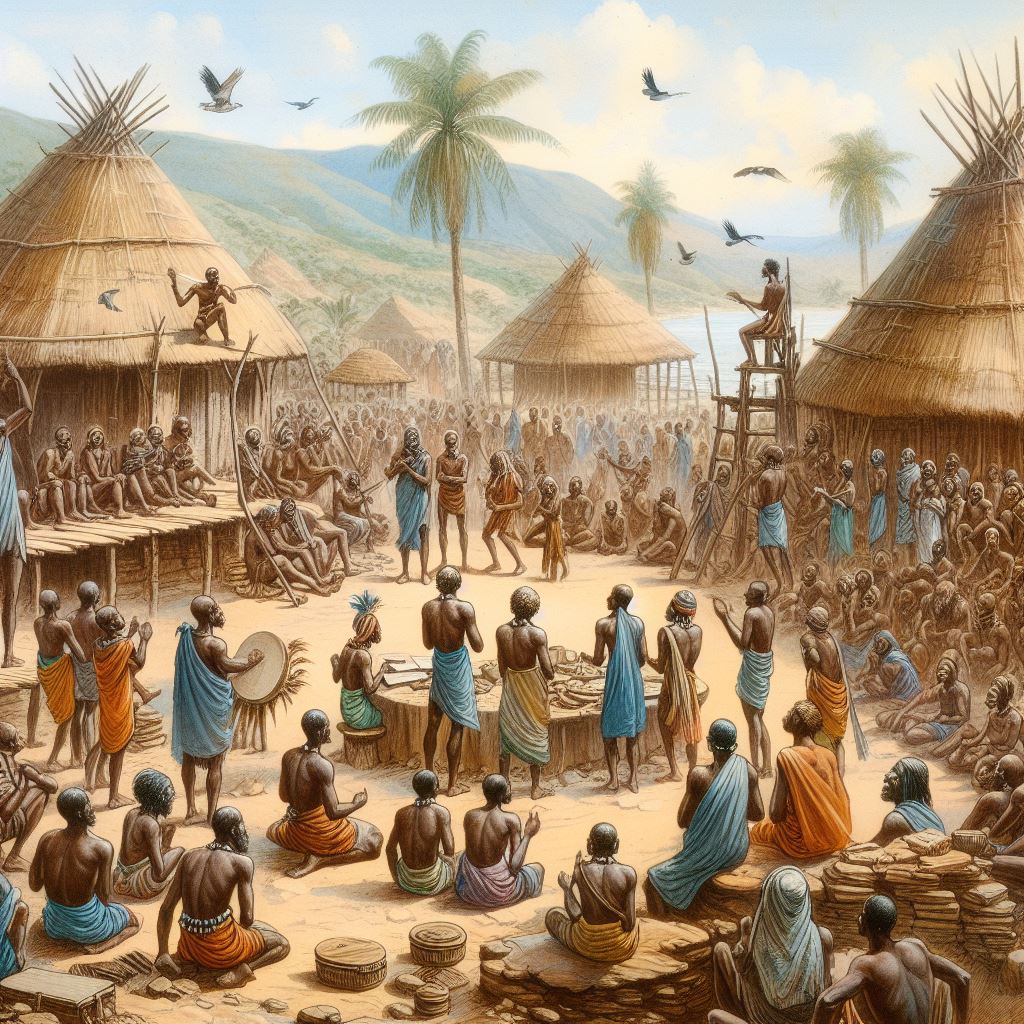
In the middle of this upheaval, the Ortagui began to migrate from the south-eastern areas in 2942. This migration put a great strain on the Findograa nomads and communities in the northwestern lands, particularly those in Midgard’s green plains.
In 2943, the Ortagui pushed north-westward, encroaching on the Findograa territories, propelled by their own demands and problems. Tensions and conflicts arose as a result of this movement for land and resources. The Findograa nomads, noted for their flexibility, strove to dwell quietly with the Ortagui at first, but as tensions grew, confrontations became more regular. In 2946, they began to force back migrants, or, strangely, send them on to Mealis. However, as the Ortagui migration progressed, several Findograa nomadic tribes and communities were compelled to migrate or disintegrate in order to escape violence. During this time, Findograa villages splintered as they sought new areas or joined other Findograa states for security.
During this period, the Kingdom of Axitokar experienced its own troubles, with its boundaries becoming increasingly exposed to Ortagui raids. The Astral Lords of Axitokar stuck to their traditions while acknowledging the necessity for change in the face of these new difficulties.
In 2951, pressing the Ortagui resulted in their first battle with Ughuz, and their normal technique of swarming their adversaries had a disastrous effect. The Ughuz’s gunpowder and fire weaponry killed hundreds in the initial conflict, and thousands perished or were severely injured over the next few weeks.
It took a lot of work for the Findograa, but in 2953 they had gathered hundreds of clans and tribes. Filling and darkening the horizon, they caused the Ughuz to halt and turn around. Thereafter, the Findograa became much more stringent about letting anyone enter their territories.
Skjald El Mary
The Splintering of Findograa
In 3011, their empire divided; they stopped trade with outsiders, closed their territory, and enforced their boundaries. In the years after The Splintering of Findograa Communities, in the year 3032, there was a substantial shift in the way Findograa communities organised themselves and interacted with their surroundings. This epoch saw a shift away from centralised cities and towns and towards a more nomadic, decentralised manner of existence.
Western and Eastern Isles
In 3040, on the remote western Isle of Utari and the eastern Isle of Findon, Findograa communities increasingly began to turn their attention to reconnecting with the natural world. The unpredictable astral disruptions had made the stability of cities and towns challenging to maintain. As a result, many Findograa began to favour a simpler, nomadic existence.
Communities on these remote islands embraced nomadic herding as a way of life. They roamed the islands with their herds of livestock, taking advantage of the lush pastures and pristine landscapes. The Findograa rediscovered the importance of harmony with nature and their role as stewards of the land.
Around 3100, as the Ortagui migration had begun to disrupt their lands, the Findograa near Midgard’s northern beaches and inland savannas faced problems. As a result, some of these tribes opted to relocate further inland, back to the wide savannas where the Findograa formerly thrived as nomads. These Findograa communities centred their settlements around minor cities, villages, and hamlets. Farming became an important source of income for them since they planted crops on the savannas and practiced sustainable agriculture. And when Ortagui hounded and plundered them, they released increasingly warlike repraisals.
On the island of Mealis, the Findograa witnessed a rebirth of their nomadic roots. They found inspiration in their ancient customs and recognised that a nomadic existence allowed them to adapt to the changing environment more efficiently. While nomadic herding was still an important element of their culture, the Mealis Findograa also had some town-sized farming villages. There, they farmed crops and raised cattle in accordance with the natural cycles of the land.
In 3150, the power structures that formerly characterised their centralised towns began to disintegrate rapidly with the move towards nomadic and decentralised living. Leadership was also frequently decentralised within specific tribes or groups, with chieftains and councils taking on leadership responsibilities. Findograa’s tenacity and adaptability resurfaced throughout this period. Communities were increasingly self-sufficient, relying on herds and farms for food. They also kept their proficiency in magic, which remained an important element of their identity.
Despite returning to a more nomadic and decentralised way of existence, the Findograa never lost touch with astral wisdom. They saw that the astral and mana ties were critical to their existence and altered their practices to deal with the ever-changing astral terrain in a shamanistic manner.
Overall, the Findograa villages adopted a simpler yet robust manner of life throughout this time period. They reconnected with nature, maintained their cultural identity, and planned for the problems and possibilities that would occur in the coming years.
The year 3967 was a watershed moment in the history of the Findograa and the world at large. The first catastrophe, the result of the divines’ attempt to exterminate vampires, had far-reaching ramifications for the entire world.
Skjald Ulrich
Second Age
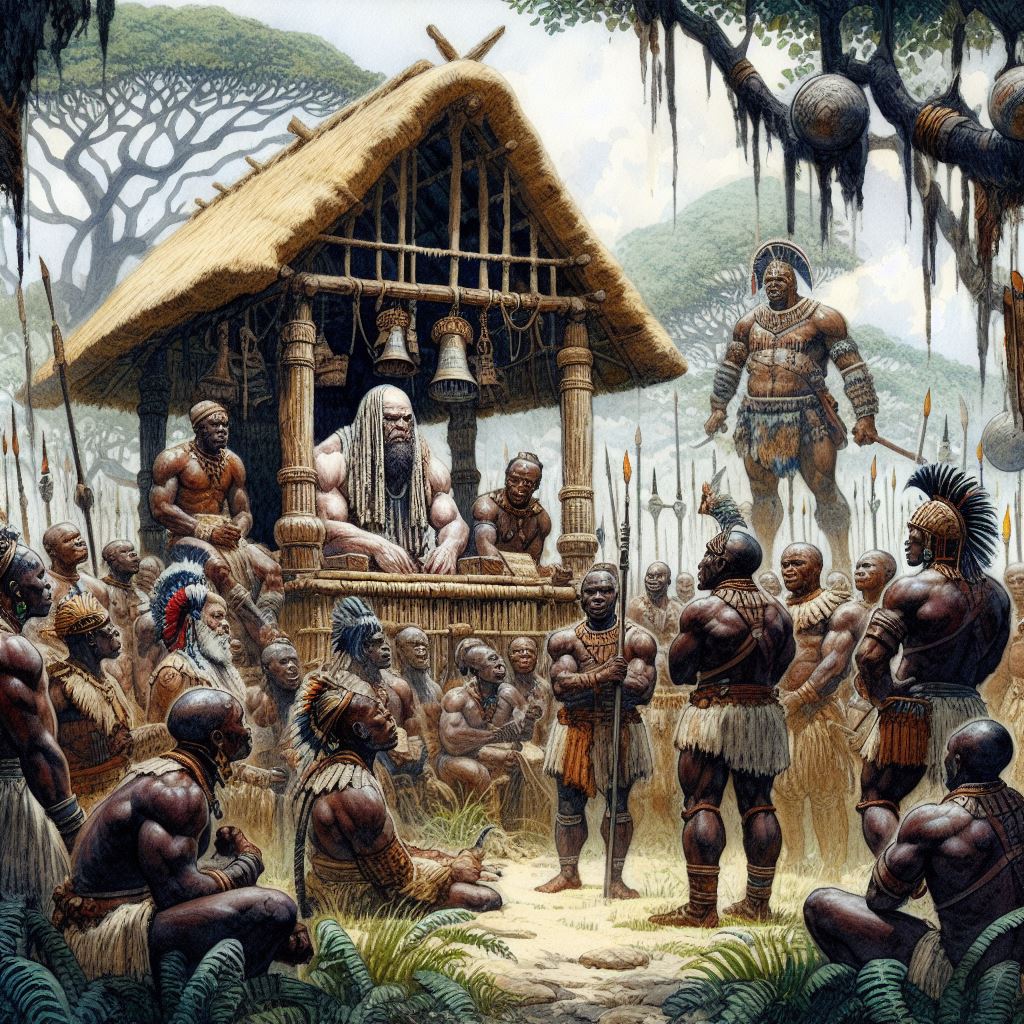
The Divines’ efforts to remove the vampire danger caused catastrophic world upheaval. The Findograa, like countless other races, had their camps, paths, and clans destroyed yet again. The whole fabric of the Earth was ripped apart, resulting in enormous geographical shifts.
The northern lands were devastated, including Mealis, Utarik, Midgard, and Findon. Much of this land became submerged beneath the oceans, causing the world sphere to bulge considerably near the equatorial mountain ranges. As a result of this horrific occurrence, tens of thousands of people of many ethnicities either drowned or were swallowed by the shifting soil.
Changes in the Sun and Moon
The effects of the first catastrophe spread to celestial bodies. The courses of the Sun and Moon, which are essential to the world’s equilibrium, were altered. These changes had a huge impact on the world’s climate, seasons, and people’s lives.
The immediate calamity devastated many Findograa villages; many lost loved ones, houses, and livelihoods. The survivors were seized with grief and sorrow as they attempted to reconstruct their lives in the aftermath of such a tragic loss.
Assistance from Allies and Other Races
In the midst of such widespread grief, the world’s races came together in solidarity. Ortagui, Utarik, Ughuz, and even other neighbouring races came to the rescue of the Findograa, who had been devastated by the disaster. This cooperative spirit alleviated some of the pain and promoted a sense of solidarity among the many ethnicities. T’Aurs, Fautyr, Kobold, Ljost Alfar, Drakk Alfar, and Wickeryadi also pitched in, recognising the scale of the calamity and the necessity for collaborative efforts to rebuild.
Arrival of Vampires
In the chaos that followed the disaster, some vampires sought remote and isolated locations to establish themselves. While many races were apprehensive of this improved Alfar, some decided to cohabit with them. Some vampires blended into Findograa villages throughout time, while others went on to create massive and intricate fortresses. These vampire fortresses became intriguing characteristics of the post-cataclysm world, and their occupants frequently maintained an uneasily balanced relationship with their non-vampire neighbours.
Skjald Sigurd
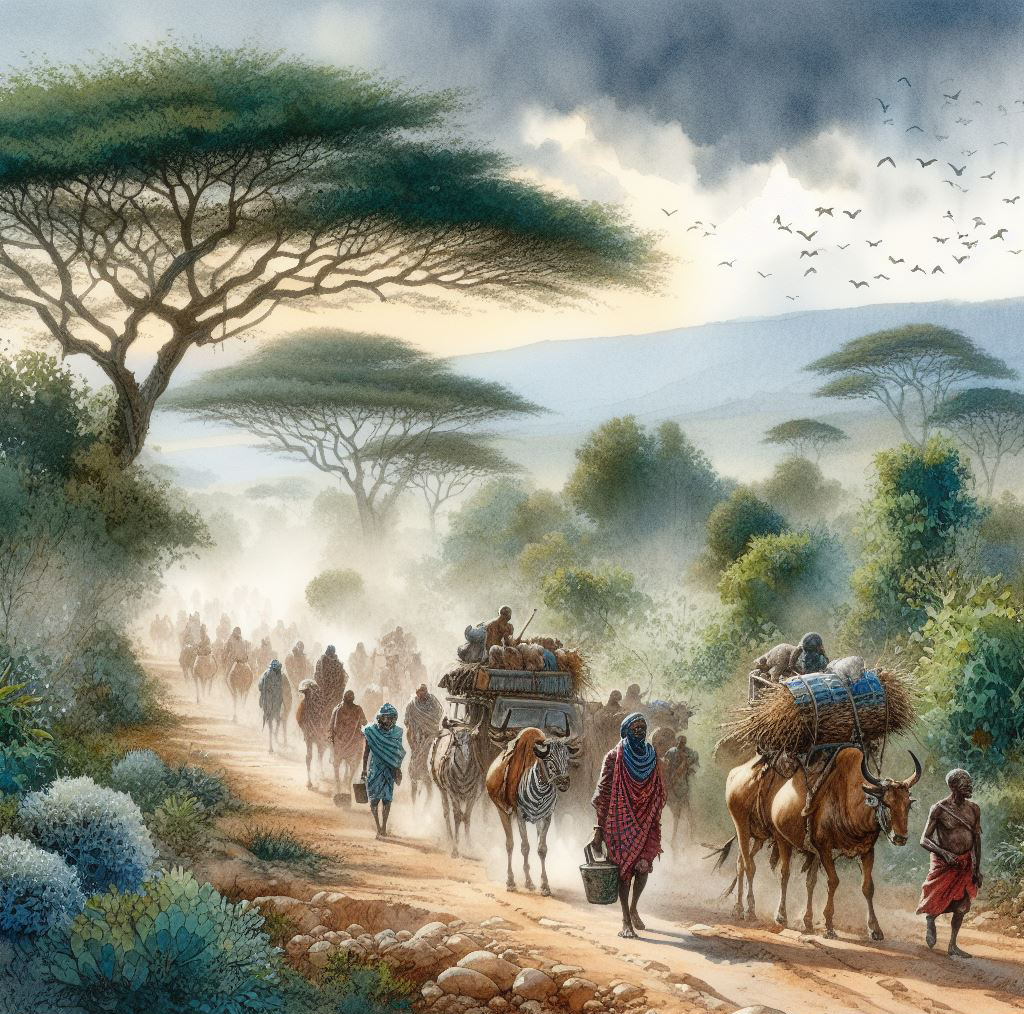
Epics of Findograa
In the year 628, the Findograa were confronted with an increasing military presence along their borders. This presence was a direct outcome of the Dunelords War among the Ortagui, which had spread into the Findograa territory.
The Dunelords War was a long and complex struggle between numerous Ortagui tribes, each fighting for control of vital territory and rich resources. As the Ortagui fought along their desert homeland’s shifting dunes, their problems spilled over into neighbouring lands, including the Findograa’s boundaries.
The Findograa were forced to boost their military presence along the borderlands in order to safeguard their domains and maintain calm. They fortified their defences, boosted patrols, and strengthened their fortifications. The Findograa understood the significance of always being attentive and well-prepared to resist invasions into their domains.
Diplomatic efforts were made during this period to defuse tensions with various Ortagui clans. The Findograa, noted for their versatility and diplomatic abilities, always sought peaceful answers to crises. These diplomatic encounters marked the start of a complicated relationship between the Findograa and the numerous Ortagui tribes, characterised by phases of collaboration and competition.
A mysterious and dreadful catastrophe occurred near Flurg’s coasts in 644, affecting both the Findograa and the Ortagui. A squadron of monstrous ships, unlike anything seen before, docked off the coast of Flurg. These strange boats had no recognised marks and seemed to defy understanding. The Findograa and the Ortagui got alarmed as it became evident that the fleet’s objectives were unclear and potentially dangerous.
A vast army of Pigryn, a gruff and mysterious species, marched southeast from the fleet’s position, adding to the suspense. The Findograa and the Ortagui were brought together in unexpected ways due to the threat these invaders presented. Recognising the gravity of the situation, the Findograa and Ortagui set their differences aside and launched a combined attack against the fleet and the Pigryn invaders. They successfully repulsed the attack and torched the foreign fleet to the waterline in a ferocious fight.
The burning Kinoblin fleet was said to be haunting the northern waterways as ghostly apparitions in the aftermath. Divers were discouraged from approaching the treasure-filled cemetery that lay under the sands of the northern waterways as a result of these myths.
Skjald Valgrif

The unlikely Alliance
In 1538, a unique and unusual occurrence occurred when the Findograa and the Ortagui put aside their differences and banded together to face a shared foe. The Findograa and Ortagui regions have long been tormented by hideous animals that pose a menace to both species. Born from the tumultuous aftermath of the world’s genesis, these monsters have become bolder and more numerous through the years.
Recognising the gravity of the situation, the Findograa and the Ortagui set aside their previous enmity and joined forces to rid their territories of the monsters. The collaborative effort demonstrated their resilience and united determination to safeguard their regions and people. The unity was successful, as the united strength of the Findograa and Ortagui drove the monsters back and rid their territories of the threat. This unusual collaboration left a lasting impact and served as a reminder that, when confronted with a shared adversary, the races could set aside their differences for the greater good.
The Findograa faced periodic assaults from Ortagui invaders in 1728, 2560, 2581, 3471, and 3600, resulting in a series of battles and territory changes.
Throughout these years, the Ortagui maintained pressure on the Findograa frontiers, such as territory conflicts, resource competition, and power battles among Ortagui tribes, resulting in intermittent wars and skirmishes.
The Findograa reacted to Ortagui demands by stretching their military muscles, fortifying their defences, and fighting defensive engagements. The pressure from the Ortagui proved too much for the Findograa in 3600, and they were compelled to yield some of their holdings to their Ortagui neighbours.
In 3606, the Findograa launched a daring quest to recapture regions that had been lost to them for decades. The Findograa marched southeast with a large army to recapture lands that had long been under Ortagui rule. Their campaign reverberated across the Ortagui Lifkatate, a confederation of Ortagui tribes.
The military operation of the Findograa had a profound influence on the Lifkatate. Internal tensions and differences among Ortagui tribes were exposed, resulting in the confederation’s weakening. Findograa’s audacious manoeuvre had shattered Ortagui’s long-standing balance of power, causing it to break open.
Skirmishes arose along the southeastern frontiers of the Findograa region once more in the year 4020. Despite times of relative peace and collaboration, conflicts between the Findograa and neighbouring Ortagui tribes in the southeast reappeared. Land, resource, and territorial disputes erupted, resulting in intermittent conflicts and skirmishes.
A mysterious and fearsome beast, unlike any known race, travelled through Findograa territories in the winter of the year 4342, causing excitement and doubt. This monster had a peculiar bull-headed look and was not classified as a T’Aur, Fautyr, or any other known race. Its motivations and origins were unknown, although it was said to be on a quest to find vampires.
The Vampire Purge: The bull-headed beast is said to have identified and cleansed outlying vampire lairs, leaving them vacant. These lairs, which were claimed to be full of artefacts, lore, and riches, have remained abandoned and unspoiled ever since. The acts of the bull-headed beast had a significant influence on the vampire population in the area.
These events, which span several years, represent the Findograa’s dynamic and ever-changing history, their relationships with the Ortagui, and the difficulties they encountered from external forces and strange animals.
Skjald Vinotis
Third Age
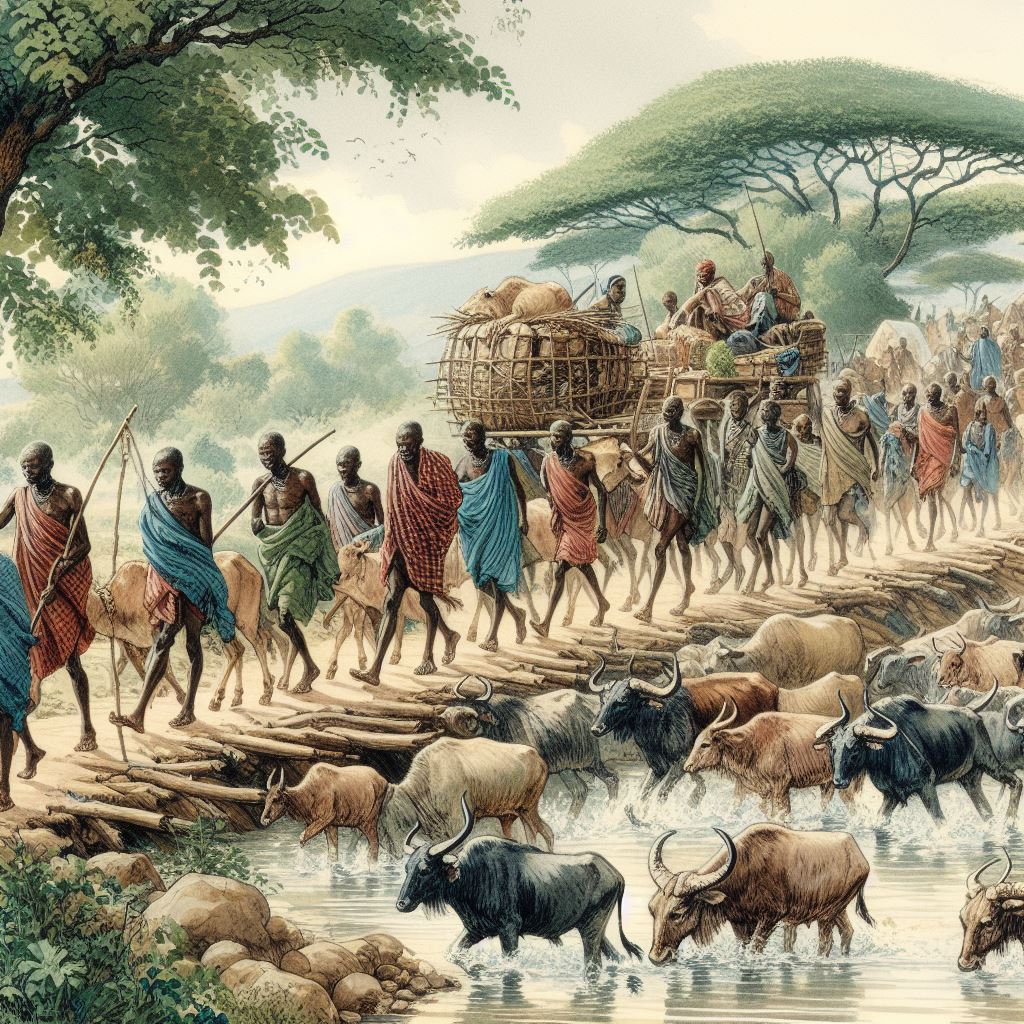
The Findograa saw the arrival of the first wanderers on their beaches in the year 86. These wanderers were on the hunt for a bull-headed god, which led them to the Findograa territories. Others soon followed, lured by their own adventures or the desire to construct supply camps for fellow wanderers.
The Findograa first did not reject the Wanderers since they appeared to require just tiny regions for their operations. This early acceptance, however, would prove to be a fatal blunder. As time passed, the number of Wanderers increased, as did their desire for space, resulting in clashes between the Findograa and the newcomers.
Skirmishes and Surrender
Findograa launched raids on the Wanderers in 359, resulting in heavy clashes. The situation deteriorated, and the Wanderers received large reinforcements in 361. By 363, the Wanderers had won significant victories in a number of wars, forcing the Findograa to surrender and pay hefty tributes.
The North Vular War, which occurred in 853, was an important conflict. The Findograa, still haunted by their previous defeats, banded together with the Ortagui to mount an attack against the Vular. The combat looked to be tilting in favour of the assailants at first. The Findograa and Ortagui united armies achieved significant advances against the Vular. However, the war’s fortunes would soon turn significantly. When the large and fearsome fleet arrived at the shores, it unleashed support that turned the wanderers into an overwhelming force. Even Ughuz, who considered joining the fight against the wanderers, was taken aback by the sheer bulk and fury of the wanderers, so they backed out. The Wanderers eventually triumphed, imposing harsh penalties on the vanquished soldiers.
The Nimabu Pond Slaughter
Old resentment and a conspiracy concocted by the Vular drove the Findograa to organise an army and march on the Ortagui in 2294. The two armies battled on the beaches of Nimabu Pond, where an Ortagui army was waiting. When the Findograa forces assaulted the Ortagui, a Vular army laying in ambush attacked them. Panic gripped the Findograa, and they were eventually murdered during the pursuit.
Legendary Blades
In the year 4230, the Findograa came across Kobold traders looking to purchase Ortagui Kootz steel weapons. Some Findograa traded with the Kobolds, selling these renowned Ortagui blades. The Findograa got suspicious as more and more legendary blades changed hands. They ultimately realised that the Vular were purchasing this valuable Ortagui weaponry. In response, they launched a quest throughout Findograa to reclaim the renowned swords for their elite guard.
In the year 4286, the world experienced the most remarkable and chaotic occurrence in history—a confluence of unimaginable events. Several tragic disasters occurred at the same time during this dreadful year. The barrier between the world and the astral shifted, the Vornir sang the Hymn of Truenames, Mount Vula erupted, the Isle of Ljostari sank, the Deep Blue Tsunami washed ashore, and long-dead ancients were revived.
This catastrophic convergence of events changed the world yet again, changing its basic fabric and calling into question our notion of reality. The ramifications of this incident have far-reaching and deep implications for the Findograa and other races throughout the planet, changing their destiny in ways that are yet unknown.
Skjald Yell’a’beard
Fourth Age

In year one, the volcanic eruption of Mt. Vula and the sinking of the Isle of Ljostari did not directly impact the Findograa, but the ensuing tsunami was felt. The destructive waves caused severe damage, particularly in coastal and low-lying towns. Arisen also came in the world, although happily, not a large number were relegated to corpses or dusty grave bones in Findograa territory. The majority of them were burnt and destroyed by rioters, but some were able to join together and establish Arisen settlements.
“Ahnram’s Cradle” at Mealis Southern Rocky Shores
Ahnram’s Cradle is located on Mealis’ craggy southern coast, where the rocky landscape meets the lapping waters of the sea. In year 4, Ahnram, a Findograa who was among the first Arisen to arise from the sea’s depths, inspired the name of this hamlet. The steep cliffs provide a natural barrier between the living and the Arisen, who have made their homes and improvised constructions among the rocky outcroppings and caverns.
The Arisen of Ahnram’s Cradle live in seclusion and are suspicious of the living. While they do not actively seek out problems, they have a strong suspicion of the living and prefer to be alone. If intruders approach their village, they have been known to respond defensively, although they rarely travel far from their rocky shelter.
“Nar’tar’s Embrace” at Midgards Northern River Delta
Nar’tar’s Embrace is located on the northern coast of Midgard, amid the huge river delta. This hamlet arose as an Arisen site in year 1, as a consequence of rising water levels that swamped nearby tombs and both known and undiscovered remains from the First Cataclysm. The delta’s labyrinthine rivers and marshy landscape secure the Arisen’s seclusion, which acts as a natural buffer against living communities.
The Arisen of Nar’tar’s Embrace have mixed feelings about the living. Some of them have profound anger for the living, believing that their disturbing graves are what caused their change into Arisen. Others are more receptive and interested, watching living communities from afar on occasion. They avoid direct conflicts in general, although their attitude towards the living differs amongst individuals, resulting in an uncertain interaction with adjacent communities.
Ahnram’s Cradle and Nar’tar’s Embrace show the Arisen’s various attitudes and dispositions towards the living, as influenced by their particular situations and places in the post-cataclysm world.
Skjald Sigurd

Findograa’s Liches
Many people who heard about the Lich-rituals embarked on expeditions to immortality, but they were unprepared for the vampire retaliation. Around 200, the vampires, both the originals and their embraced siblings from newer generations, began to hunt for these Liche’s, and deadly battles erupted. Most of the time, the vampires won, although it has happened that the liche won. Both uncovered an intriguing impact.
If a vampire killed a lich, the released energies entered the spirit-empty winner’s carcass, contributing their energies to the victorious. This backfired on vampires because the battles at times drew onlookers, and word of the transferral circulated. As a result, liches began pursuing vampires as well, gaining unbelievable energies, so some liches now wield enormous power.
In 461, the Findograa established a Liche Hunter Academy in the style of the Ortagui Vampire Academy. They also invited monster hunters and scholars from other races to discussions or sent envoys on their behalf. This information eventually reached the Skjalds, raising the question we still debate: whether the Bullheaded God was a Lich or not, since it wore a mask and hunted vampires, gaining energies.
Drakthar the Immortal
Year of Creation: 456
Location: Mealis
Age at the Time of the Ritual: 89
Ritual Performed: The Ritual of the Eclipsed Moon
Sacrifices: a rare celestial herb, the heart of a Ljost Alfar, and a bolt of lightning.Magical Power Boost Effect: Drakthar Qophelo 'the Immortal' obtained the ability to control storms and manipulate the weather as a result of the magical power boost effect. His abilities were especially strong during lunar eclipses.Aftermath: Drakthar went into seclusion, living in a secluded cave among the rugged cliffs of Mealis. To safeguard his refuge, he used his skills to erect massive storm barriers. Drakthar has the unusual power to manipulate the weather in order to create illusions, causing him to appear as a radiant figure during thunderstorms.
Zharvok the Soul Binder
Year of Creation: 762
Location: Midgard’s Northern Savannas
Age at the Time of the Ritual: 124
Ritual Performed: The Rite of Astral Binding
Sacrifices: the essence of a fallen Vornir, the heart of a Fautyr, and a crystal imbued with the power of the Astral plane.Magical Power Boost Effect: developed the ability to bind and manipulate souls as a result of the magical power boost effect. He could capture the spirits of the dead and harness their essence to increase his magical power.Aftermath: Zharvok stayed in the northern savannas, where he created a secluded haven among the long grasses. He began tinkering with soul-bound constructions, constructing ethereal guards to safeguard his territory. His control over souls enabled him to communicate with the spirits of the Arisen, occasionally enlisting their assistance in his magical endeavours.
Elarisse Duduzile ‘the Whispering Shadow’
Year of Creation: 312
Location: Findon’s Eastern Marshes
Age at the Time of the Ritual: 58
Ritual Performed: The Ritual of Dusk and Fog
Sacrifices: a moonlit orchid, the breath of a Sproblin, and the echoes of twilight.Magical Power Boost Effect: Elarisse Duduzile ‘the Whispering Shadow’, got the ability to blend with shadows and become practically invisible as a result of the magical power boost effect. She could travel through darkness at breakneck speed, her footsteps undetected and her presence unobserved.Aftermath: Elarisse stayed in Findon’s Eastern Marshes, where she built a secret cave in the midst of the impenetrable fog. She became a guardian spirit for the Findograa settlements in the marshlands, utilising her enigmatic skills to keep them safe from harm. Elarisse has the ability to call shadow creatures, which she uses as sentinels and companions.
Vaelorna Busisiwe ‘the Veilweaver’
Year of Creation: 898
Location: Utarik’s Eastern Cliffs
Age at the time of the ritual: 110
Ritual Performed: The Weaving of the Astral Veil
Sacrifices: the essence of a fallen Wickeryadi, the tears of a Selakin, and a shard of an Astral crystal.Magical Power Boost Effect: Vaelorna Busisiwe 'the Veilweaver' obtained the capacity to influence the astral dimension, producing illusions, changing perceptions, and concealing truths. She has the ability to distort reality and spin sophisticated webs of deceit.Aftermath: Vaelorna settled on the isolated cliffs of Utarik’s western coasts. She became a coast guard, utilising her illusory talents to confound and repel attackers. Vaelorna has the capacity to weave great illusions, disappearing entire fleets and drawing interested travellers into surreal landscapes.
These Findograa Liches, both male and female, have distinct powers and histories that have been moulded by the rituals and sacrifices they have committed. Their existence around the world adds to the mystery and allure of the enigmatic Liches of Findograa society.
Skjald Kazumix
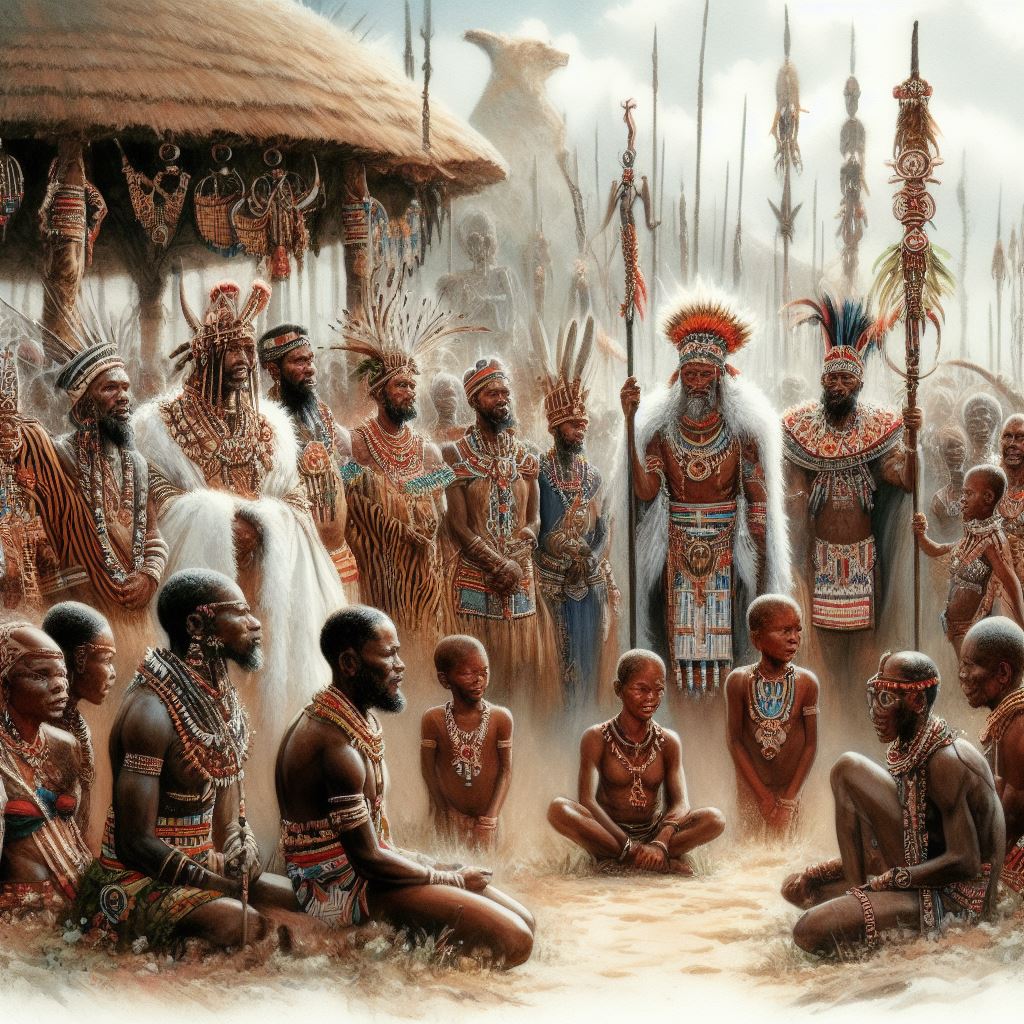
The Vampire vs. Liche battles
In 575, The Fight of Eternal Flames
Combatants: Thalindor the Emberheart, a male Arisen Lich, and Prince Amindrak, a 3rd-generation vampire
Setting: The fight took place in the crater of an ancient volcano on the Isle of Findon. The boiling lava underneath created an infernal battleground for the conflict of these otherworldly monsters, casting a bright light across the rocky terrain.
Battle Description: Prince Amindrak plummeted into the volcano’s boiling depths, his red eyes burning with the desire for dominion. Thalindor the Emberheart stood ready to protect his territory, encircled by an aura of burning flames.Amindrak launched quick and accurate assaults, aiming to bridge the gap between himself and Thalindor. Thalindor replied with torrents of lava and fire, erecting flame walls to protect himself. As their energies battled, the temperature in the volcano rose, producing an atmosphere of pure elemental chaos. The vampiric power of Amindrak allowed him to endure the blistering heat and press the attack. He lashed out with ferocious speed, attempting to breach Thalindor’s defences. Thalindor, for his part, summoned a flaming blade of pure fire to meet Amindrak’s attack.
Outcome: Prince Amindrak disarmed Thalindor and unleashed a powerful blow that broke the Arisen Lich’s form in a climactic moment. Thalindor’s fiery essence exploded in a blinding blaze, leaving nothing but ashes in his wake.
Aftereffects: Prince Amindrak absorbed Thalindor’s fiery essence, mastering fire manipulation. He earned the moniker “Inferno Vampire” and used the power of fire with lethal accuracy. The legend of the fight served as a warning to both vampires and liars, reminding them of the fearsome opponents that may await them in the shadows of their world.
In 733, The Abyssal Night’s Duel
Combatants: Elandria the Eternal, a female Arisen Lich, and Lord Bokassrek, a 5th-generation vampire
Setting: The duel took place beneath the craggy cliffs of Mealis, in the murky depths of a long-forgotten tomb. The musty aroma of old graves filled the air, and the only light emanated from the eerie glow of Lord Bokassrek’s red eyes.
Battle Description: Lord Bokassrek entered the crypt, his ghostly features lit by the brightness of his unearthly presence. He’d heard rumours about Elandria the Eternal, a mighty Arisen Lich said to dominate the very darkness itself. The crypt seemed to come alive with terrible energy as the two otherworldly entities battled with each other. Elandria unleashed serpent-like shadow tendrils to strike at Bokassrek with fierce speed. In response, Bokassrek released a flood of vampiric energy, constructing a defensive screen that absorbed the shadowy strikes. The fight continued, with Bokassrek’s remarkable speed and agility allowing him to avoid Elandria’s dark tendrils while unleashing accurate counterattacks. Elandria replied with illusions and whispers designed to perplex and disorient her vampiric opponents.
Outcome: Lord Bokassrek’s unwavering tenacity and command of his vampiric skills ultimately proved decisive. He was able to close the gap between them, plunging his teeth into Elandria’s ethereal form and draining her life essence. Elandria’s form disintegrated into a cloud of inky darkness, disappearing into the abyss.
Aftereffects: Lord Bokassrek emerged from the crypt with enhanced skills, having inherited part of Elandria’s enigmatic talents. He was dubbed the “Nightshadow Vampire” and was both feared and adored by the vampire and Arisen societies.
In 804, The Contest Among Volcanic Fury
Combatants: Ignarius the Infernal, a male Arisen Lich, and Chieftain Vordrak, a 6th-generation vampire
Setting: This epic battle took place amid the bowels of an erupting volcano in the Findograas realm of Midgard’s southern highlands. The molten lava engulfed them, forming a perilous arena of searing heat and blazing commotion.
Battle Description: Chieftain Vordrak, a crafty and unyielding vampire, plunged into the volcano’s centre, aiming to fight the strong Arisen Lich known as Ignarius the Infernal. As Vordrak reached the infernal chamber, Ignarius greeted him, wreathed in flames and encircled by molten rock. Vordrak began the combat by evading Ignarius’s ferocious assaults with his remarkable speed and agility. Ignarius, for his part, summoned rivers of lava and pillars of flame to trap his vampiric enemy. The volcano’s walls seemed to come alive with boiling flames.
Despite Vordrak’s best attempts, Ignarius’ command of volcanic rage proved overwhelming. He cocooned Vordrak in molten rock, slowly draining his vampiric vigour. Vordrak’s form was imprisoned in a flaming prison as the magma hardened around him.
Outcome: Ignarius the Infernal triumphed in a flash of molten rage, his control over volcanic powers unrivalled.
Aftereffects: Ignarius’ control over fire and lava reached unprecedented levels. He rose to become a feared figure among the Arisen, commanding Utari’s volcanic armies to safeguard their kingdom. His volcanic cave became a pilgrimage site for Arisen trying to harness the power of fire, while Chieftain Vordrak’s demise served as a cautionary tale among vampires, warning of the fearsome foes that lurked in their realm.
In 946. The Astral Nexus Conflict
Combatants: Lord Kaelthar, a vampire of the 4th generation, and Selenea the Astral Weaver, a female Arisen Lich
Setting: The conflict took place in a hidden Astral Nexus, a region of ethereal beauty where reality’s fabric entwined with the Astral world. Glowing magic threads crisscrossed the environment, creating a bizarre and ever-shifting conflict.
Battle Description: Lord Kaelthar, a fearsome vampire skilled in black wizardry, was enticed into the Astral Nexus by rumours of a great Arisen Lich. Selenea the Astral Weaver, a great manipulator of astral energies, emerged from the Nexus’ colourful tapestry to face him. Lord Kaelthar opened the battle by unleashing waves of dark energy and calling phantom beings to his assistance. Selenea responded with a symphony of astral strands, creating illusions and altering the astral plane’s own essence. As reality itself became their weapon, the battleground moved and twisted. Despite Kaelthar’s unrelenting assault, Selenea’s command over the astral dimension remained unbreakable. She bound Kaelthar in ethereal bonds, immobilising him and exhausting his vampiric energies. She destroyed his essence with a final incantation, turning him into a phantom wisp.
Outcome: Selenea the Astral Weaver triumphed, absorbing Lord Kaelthar’s evil forces and incorporating them into her dominion over the Astral dimension.
Aftereffects: Selenea’s abilities grew, and she was admired among the Arisen for her mastery of astral magic. The Astral Nexus became a haven for Arisen wishing to hone their skills, and Selenea served as their guide and guardian.
Skjald El Mary
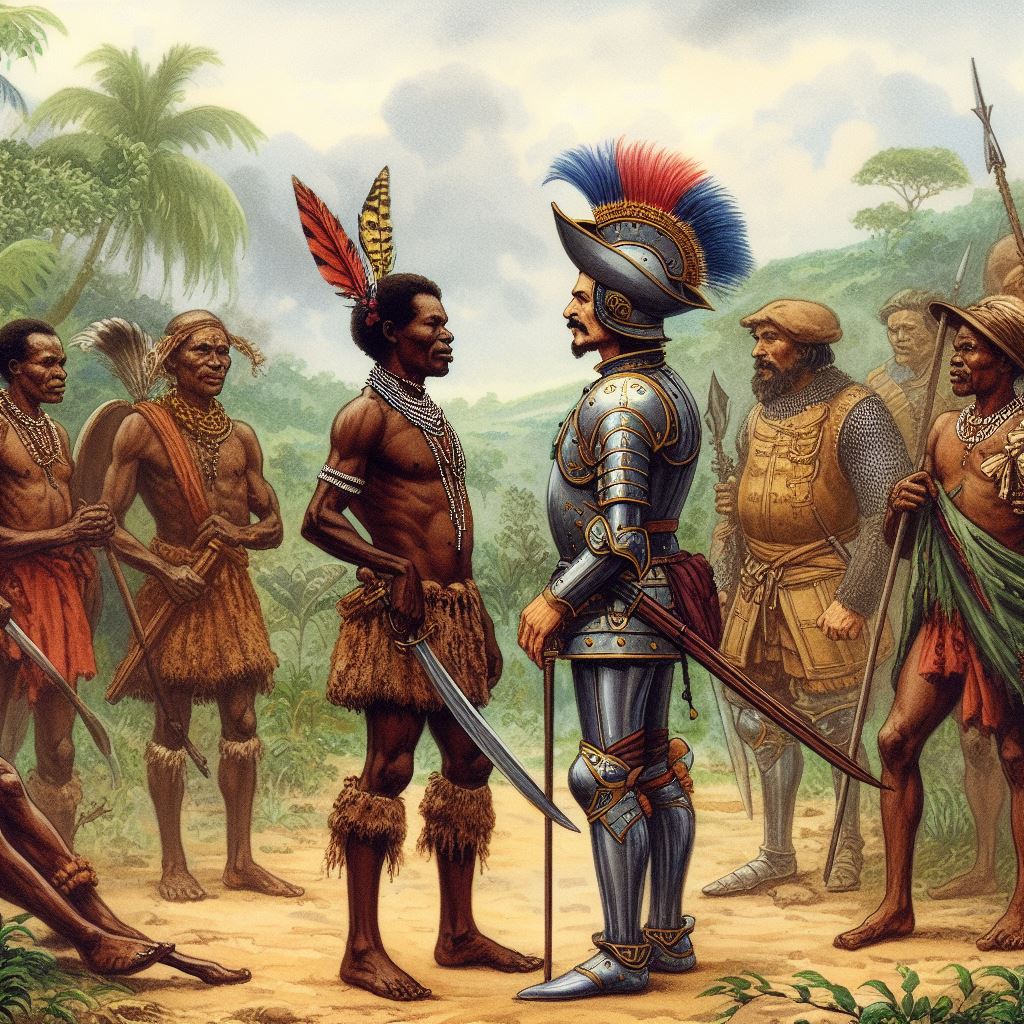
1st Alliance
In 1169, during the Findograa’s engagement with the 1st Alliance of the Wanderers, they played a critical role in forging collaboration and harmony among the alliance’s many races and tribes. Their innate diplomacy, born of a profound feeling of solidarity among their own communities, made them effective peacemakers and mediators among the member races.
Findograa representatives actively engaged in diplomatic conversations, bringing their knowledge and experience of nomadic existence to the table, which resonated with many Wanderer tribes. They offered their expertise in sustainable farming, resource management, and the difficult balance between nomadic traditions and established life.
Skjald Sigurd
The High Kings and The Realm
The Findograa continued to work as ambassadors of friendliness and concord during the rule of the High Kings, from 1250 onward. They aided in bridging cultural divides and facilitating the interchange of ideas and practices among The Realm’s diverse races. Findograa emissaries were also instrumental in settling disagreements and conflicts, as well as fostering peaceful coexistence and collaboration among the realms.
Their allegiance to the High King and the concept of a unified realm prompted their leaders to pledge loyalty and give their help at Grimsborg. They saw the opportunity for wealth and stability that a unified realm might provide to all races, even their own. Throughout this time, the Findograa remained a knowledgeable and adaptive people capable of prospering in both nomadic and sedentary surroundings.
Skjald Ulrich
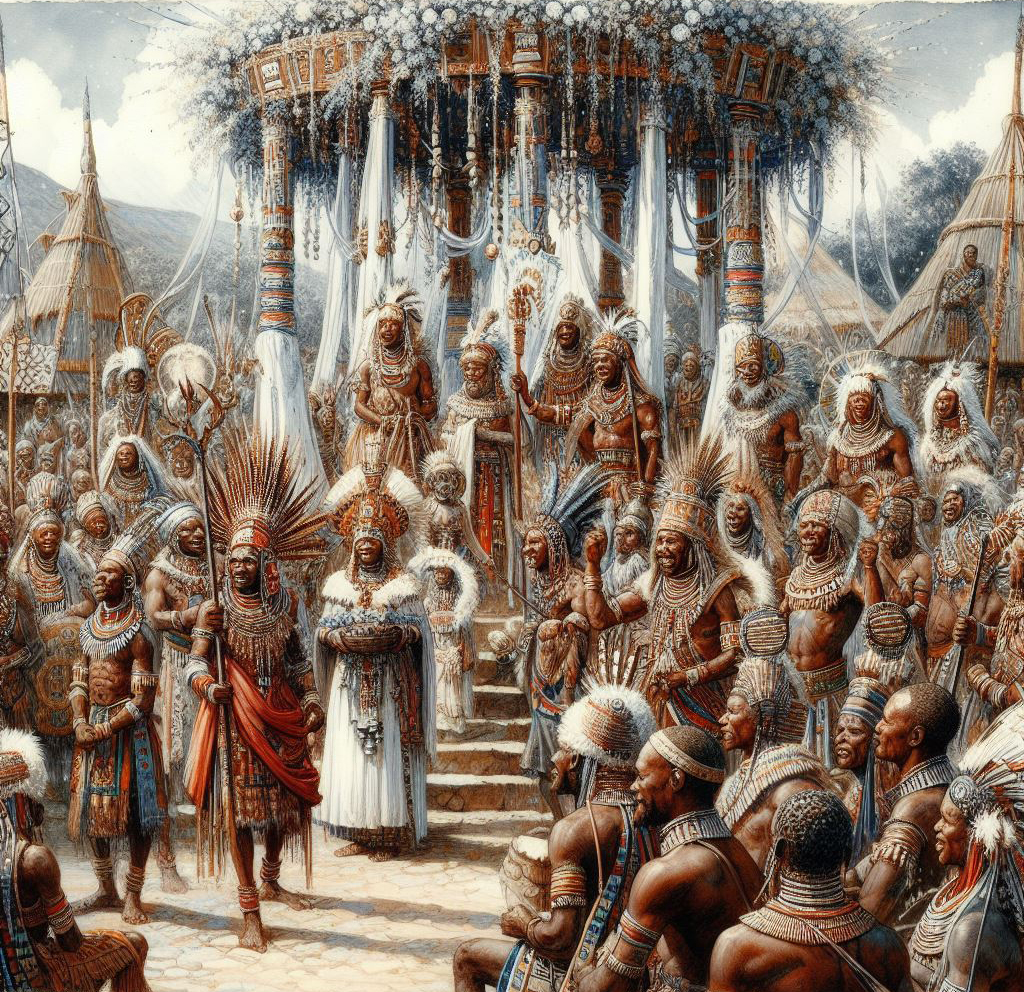
The Great Invasion
In 1277, they faced the Great Invasion of various alien races: Kinoblin and Pigryn returned to Midgard, and even fouler races trampled the people of the realm. The Findograa organised their defences with tenacity and resourcefulness, eventually driving the invaders away from their homelands. Here’s how they defended:
The Findograa tribes and villages joined together in a magnificent demonstration of togetherness. Chieftains and wise elders met in a grand council to discuss and coordinate strategy and goals. They emphasised the significance of group activity and togetherness.
The Findograa used guerilla warfare techniques due to their deep knowledge of the area and agility gained through generations of nomadic living. To weaken the invaders, they used hit-and-run tactics, ambushes, and sabotage. Expert marksmen evolved from skilled hunters who used their knowledge of the forest to build traps and establish chokepoints.
The Findograa used their extensive knowledge of the natural terrain to their advantage. They took advantage of the rough terrain, erecting natural obstacles and fortresses to impede the invaders’ progress. The attackers frequently encountered unknown and difficult terrain, sometimes perilously slowing their march.
The Findograa scouts and sentinels were continually on the alert for hostile movements. They employed signals and quick communication mechanisms to warn neighbouring tribes of potential dangers, enabling a coordinated and swift response to invasion efforts.
The Findograa warriors used archery and hit-and-run tactics to conduct ambushes against the invaders. They concentrated on supply lines and stragglers, causing disruption and confusion among the opposing ranks. Over time, the invaders were worn down by the harassment.
The Findograa built defensive fortifications such as concealed watchtowers and temporary barriers in key spots. These structures acted as defensive strongholds, allowing them to mount effective opposition and safeguard their inhabitants.
Throughout the fight, the Findograa remained adaptive, modifying their tactics as required. When the invaders sought to adapt to their guerilla tactics, the Findograa switched to new methods, constantly keeping the enemy guessing.
Recognising the dire need for more assistance, the Findograa sought out other races and tribes who had also been affected by the invasion. They forged diplomatic partnerships to fortify their defences and pool their resources against a common foe.
Camouflaging the Territories:
Findograa, experts at blending with their environment, employed powerful illusionists to cloak settlements, making them appear as natural rock formations or dense foliage. Unfamiliar invaders wandered past these hidden settlements, oblivious to their presence.
Findograa, with their knowledge of the land, redirected invader trails, leading them away from vital Findograa territories. Cleverly disguised signs and markers led Invaders astray, ensuring the safety of Findograa lands.
Findograa scouts, adept at tracking, identified individuals collaborating with the invaders. These traitors were swiftly dealt with, either expelled or, in extreme cases, neutralized. The Findograa sent a clear message: betrayal would not be tolerated.
Epic Battles
The Battle of Whispering Pines
Location: The dense forests of Mealis
In the Battle of Whispering Pines, the invaders attempted a surprise assault on a sacred Findograa grove. As the invaders advanced under the canopy of ancient trees, the Findograa sprang their trap. Skilled archers hidden among the branches rained arrows down upon the unsuspecting enemy. Meanwhile, Findograa warriors, experts in guerrilla warfare, ambushed the invaders from all sides. The forest seemed to come alive with the Findograa’s deadly arrows and swift strikes, decimating invader ranks and eventually forcing them into a chaotic retreat.
The Siege of Emberhold
Location: The rocky cliffs of Utarik overlooking the Emberhold fortress
The invaders, in their arrogance, attempted to besiege Emberhold, a vital Findograa fortress overlooking the ocean. The Findograa defenders, aware of the invaders’ plans, employed a combination of archers, sorcerers, and elementalists. The invaders were met with a barrage of fiery arrows, summoned stone barriers, and tidal waves that crashed against their ships. A group of skilled Findograa infiltrators managed to sabotage the invaders’ supply lines, creating chaos within their ranks. The siege turned into a desperate struggle for the invaders, who eventually retreated, leaving their siege engines and battered ships behind.
The unrelenting struggle of the Findograa eventually took its toll on the invaders, inflicting demoralisation and attrition. The invaders experienced supply shortages and persistent harassment, making the possession of Findograa territories unsustainable.
Finally, the Findograa’s unrelenting tenacity, togetherness, and strong connection to their country proved crucial in repelling the invaders and allowed them to defend their ancient areas and villages from future harm.
Skjald Ulrich
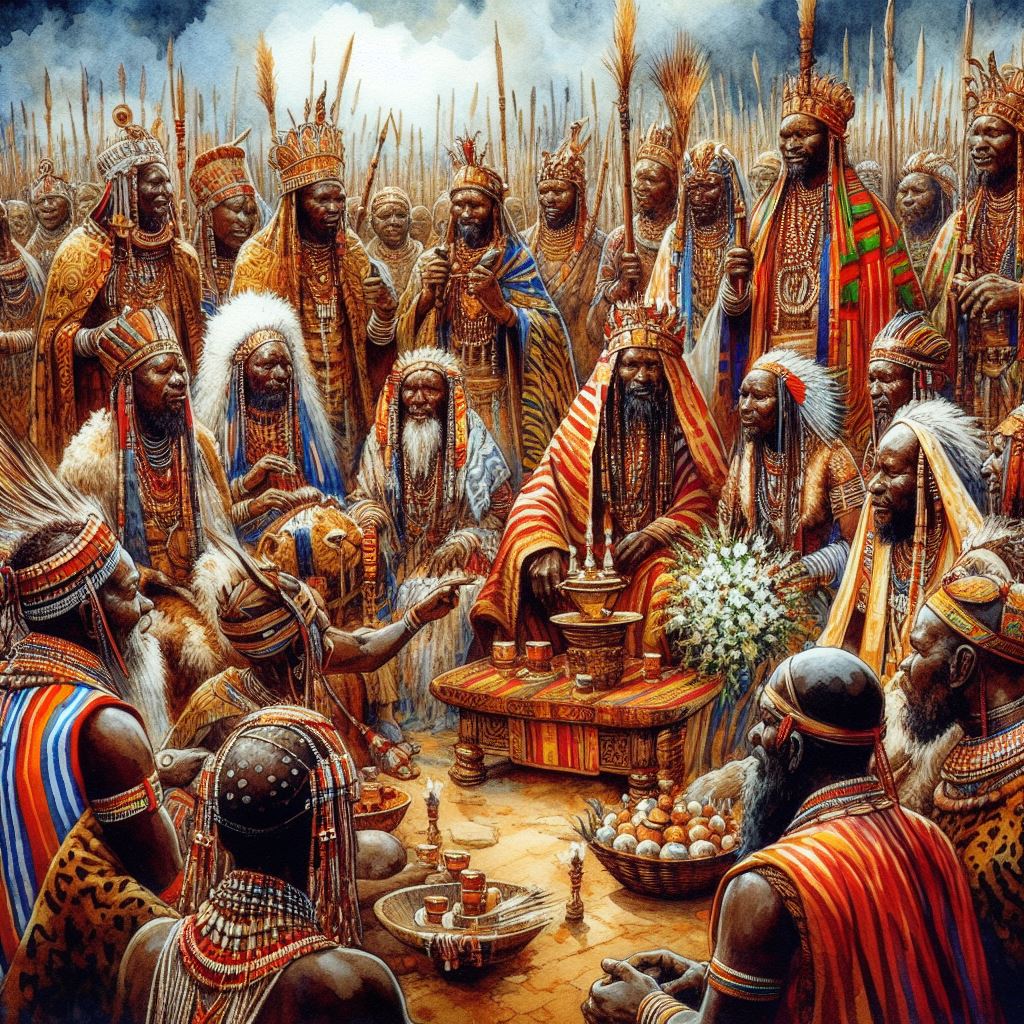
The Great Invasion: Findograa’s Hidden Agenda
While the Findograa fought fiercely against the invaders and traitors, they seized the opportunity to subtly manipulate the chaos of war to reclaim their territories from those they once shared them with. Here are some hints subtly woven into the descriptions, suggesting their hidden agenda:
The Battle of the Forests: Amid the chaos, Findograa scouts quietly marked Ortagui and Moss’Ari’s tents. Once the invaders were defeated, Findograa elementalists constructed illusions, making it appear as though the forest itself had eaten these encampments, removing all evidence of the acts.
Camouflaging Territories: In the process of camouflaging other communities, the Findograa skillfully altered illusion spells to make these villages appear to the invaders, inciting them to assault the lands.
Eradicating Traitors: Some of the “traitors” discovered among the Findograa’s foes were, in reality, people from races like Drakk Alfar and Fautyr who had overstayed their welcome. These people were discreetly taken under the pretence of justice, leaving their communities exposed to Findograa’s covert territorial expansion.
Aftermath Whispers: Following the conflicts, rumours spread of Findograa warriors dressed in darkness invading Kobold and Ljost Alfar communities and discreetly urging people to go elsewhere. At the time, the displaced races were ignorant of the orchestrations and merely believed it was the invaders.
These hints, sprinkled within the narrative, suggest the Findograa’s masterful manipulation of the chaos of war, enabling them to expand their territories while the invaders and other races remained oblivious to the gradual shifts in land ownership.
1282: They joined the Cleansing Crusade, knowing there was only one thing to do. However, many rumours circulate of the Findograa Crusaders slaughtering the remaining survivors of various damaged Wanderer, Ortagui, Realmar, and Common towns.
Skjald Valgrif
Fifth Age
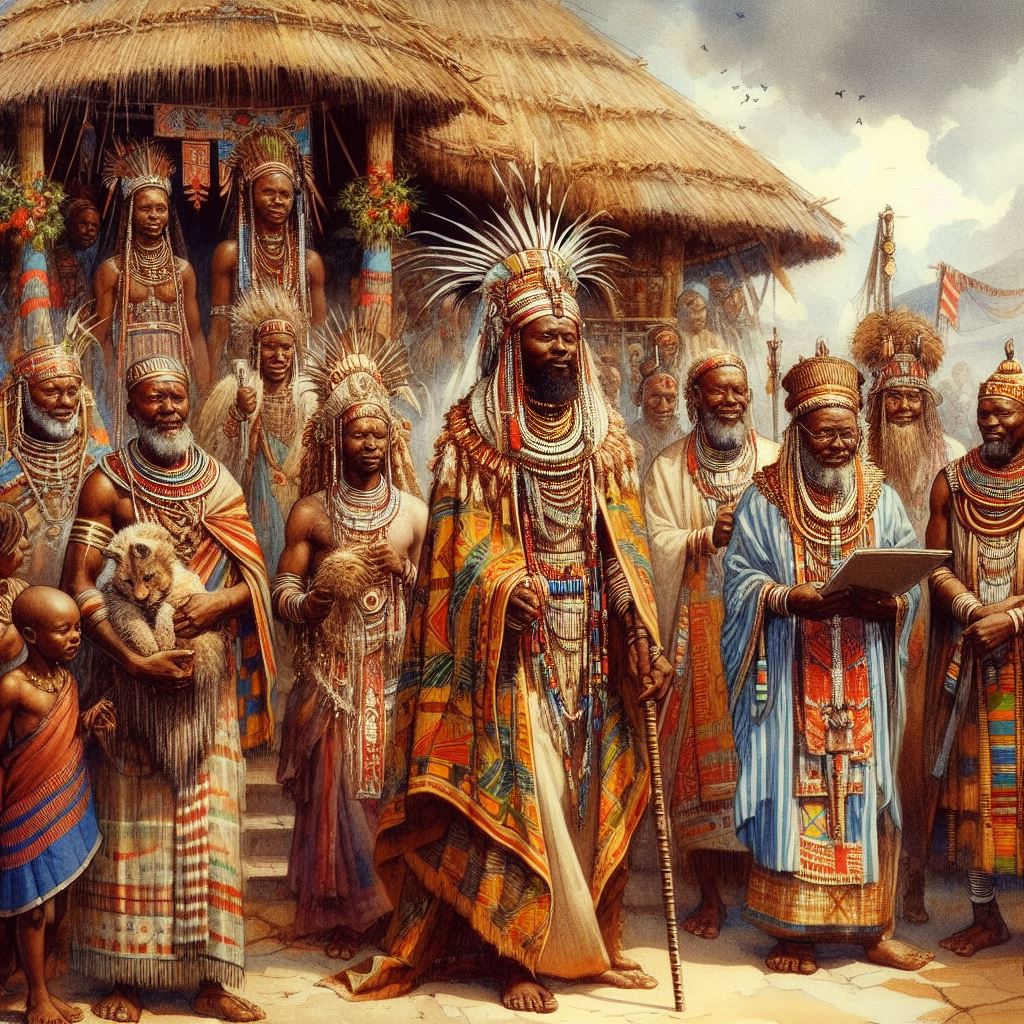
Year 1, the Scorched Dawn greets the residents of Findograa lands.
Skjald Kazumix
Environment
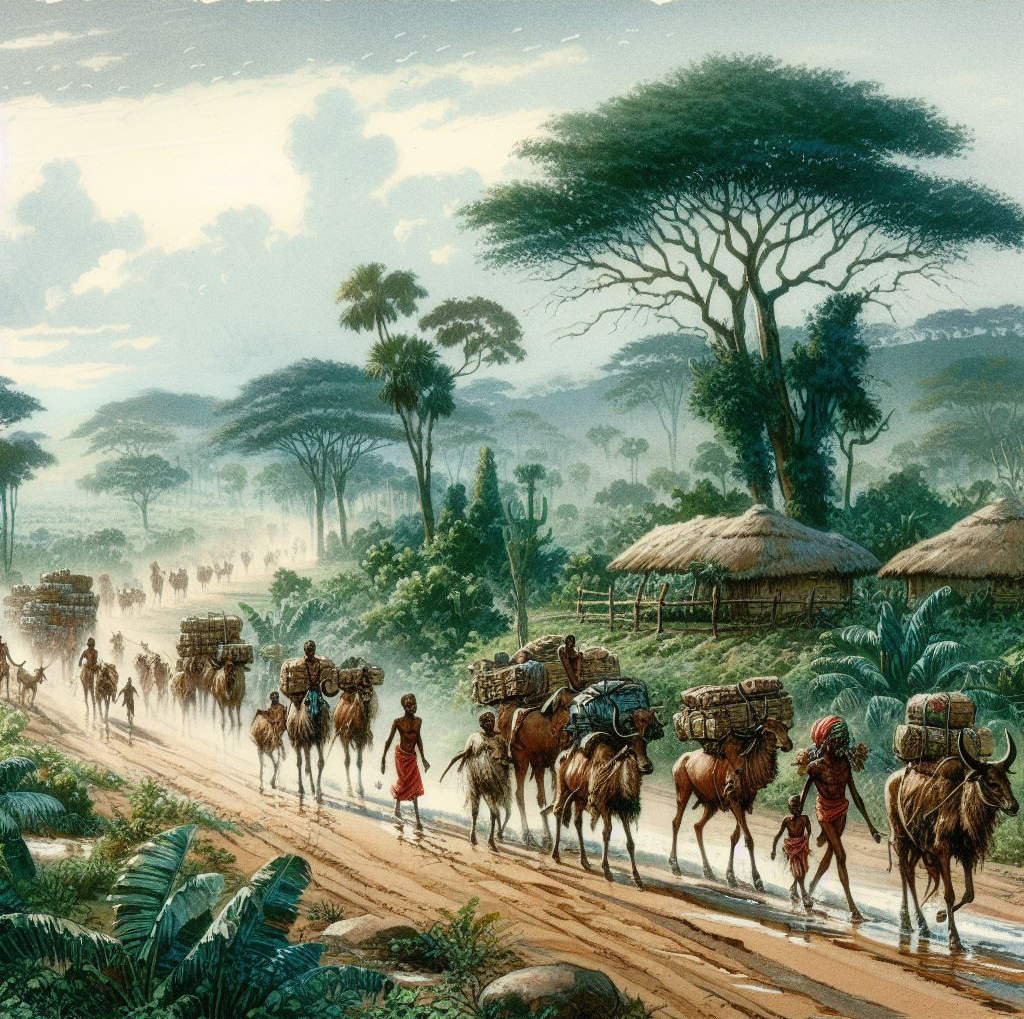
The Meali tribes prefer a nomadic culture. Those who trade with the inhabitants of Utari, Midgard, and Findon are conversant in other languages.
Skjald Ulrich
Cartography

They are spread throughout the following Isles and Countries
Skjald Vinotis
Organisation

The Evolution of Findograa Society in the Fourth Age
Political Structure:
1. Tribal Kingdoms: The once dispersed Findograa tribes gradually coalesced into tribal kingdoms, each led by a chieftain or a king or queen. These kingdoms were largely autonomous, fostering a strong sense of identity and independence among the Findograa people.
2. Clans and Tribes: Within each kingdom, the Findograa organised themselves into clans and tribes, each governed by their respective chieftains or lords. These smaller units formed the backbone of Findograa society, responsible for local governance, resource management, and defence.
3. Shamanic Councils: Shamanic councils held significant influence within Findograa communities. Shamans served as spiritual leaders, healers, and mediators. They played a crucial role in decision-making processes, offering guidance and interpreting signs from the gods. These councils ensured that spiritual beliefs and traditions were respected, even in the face of political decisions.
Population Mechanics:
1. Population Diversity: The Findograa population was diverse, comprising various clans and tribes, each with its own customs, dialects, and traditions. This diversity fostered a rich cultural tapestry within Findograa society, promoting tolerance and acceptance of differences.
2. Trade Networks: Despite their fragmented political structure, the Findograa maintained extensive trade networks. Each tribe specialised in specific crafts or resources, fostering interdependence. For example, coastal tribes in Midgard excelled in fishing and maritime trade, while tribes in Mealis were skilled herdsmen.
3. Migration and Nomadism: Findograa society retained its nomadic roots, with many tribes preferring a semi-nomadic lifestyle. The search for fertile grazing lands and seasonal migration routes was essential for their herding economy. This lifestyle allowed for flexibility and adaptability, vital traits in their ever-changing world.
4. Caste System: Over time, a subtle caste system emerged, with skilled artisans, traders, and warriors forming distinct social strata. Warriors held a revered position, safeguarding their communities from external threats, while artisans and traders contributed to the economy and cultural exchange.
Political Dynamics:
1. Alliance Politics: The kingdoms occasionally formed alliances based on mutual interests, particularly during times of external threats. These alliances were flexible and temporary, with agreements often renegotiated based on changing circumstances. The concept of collective security became paramount in the face of external invasions.
2. Competition and Rivalries: Despite the overarching need for unity, competition and rivalries persisted among kingdoms. Disputes over resources, territorial boundaries, or even historical grudges occasionally led to conflicts, albeit on a smaller scale than in previous ages.
3. Cultural Exchange: The diverse nature of Findograa society encouraged cultural exchange. Festivals, rituals, and storytelling events provided opportunities for tribes to share their traditions, fostering a sense of belonging to a larger Findograa identity.
In this complex societal landscape, the Findograa people navigated a delicate balance between unity and diversity, ensuring their survival and prosperity in the ever-changing world of the Fourth Age. The concept of a unified Findograa identity began to emerge, albeit gradually, as the kingdoms and tribes found common ground in their shared history, customs, and the need for mutual protection against external threats.
Skjald Sejrik
Special
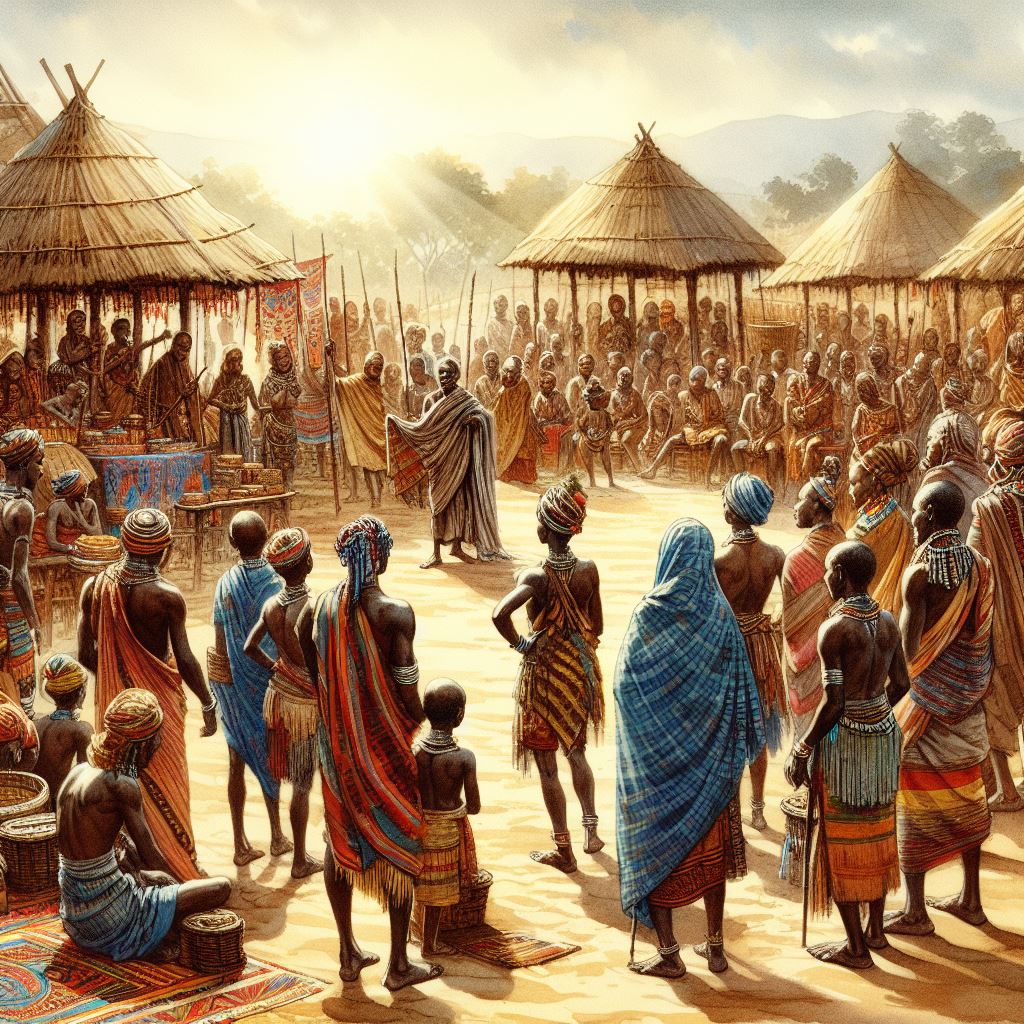
Since Üngluk Axitokat talked with their Drakk alfar ancestors, they have upheld the tradition of telling their cultures great stories and honouring those of their past whenever a chance offers itself.
Skjald Yell’a’beard
Last Updated on 2024-05-04 by IoM-Christian
